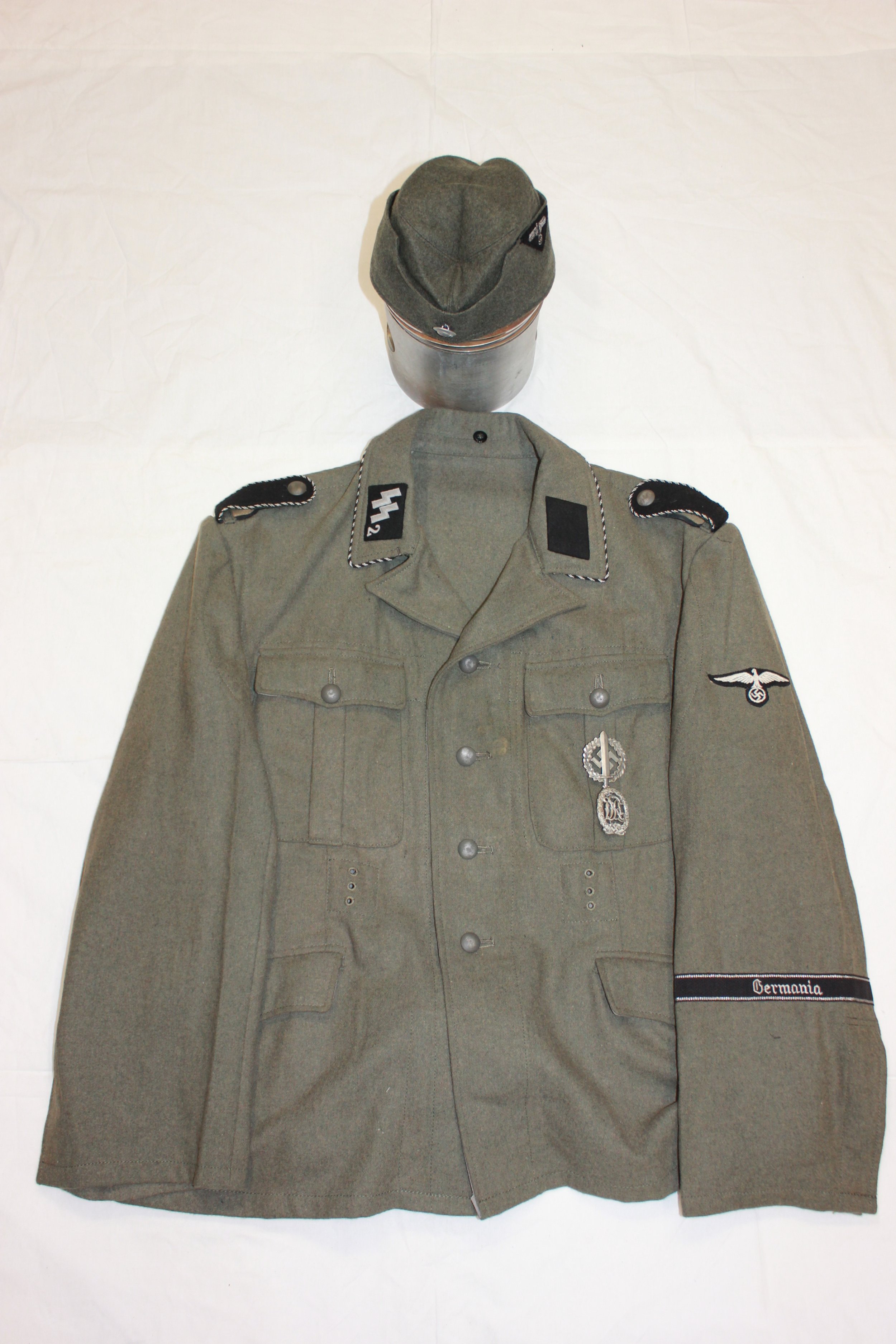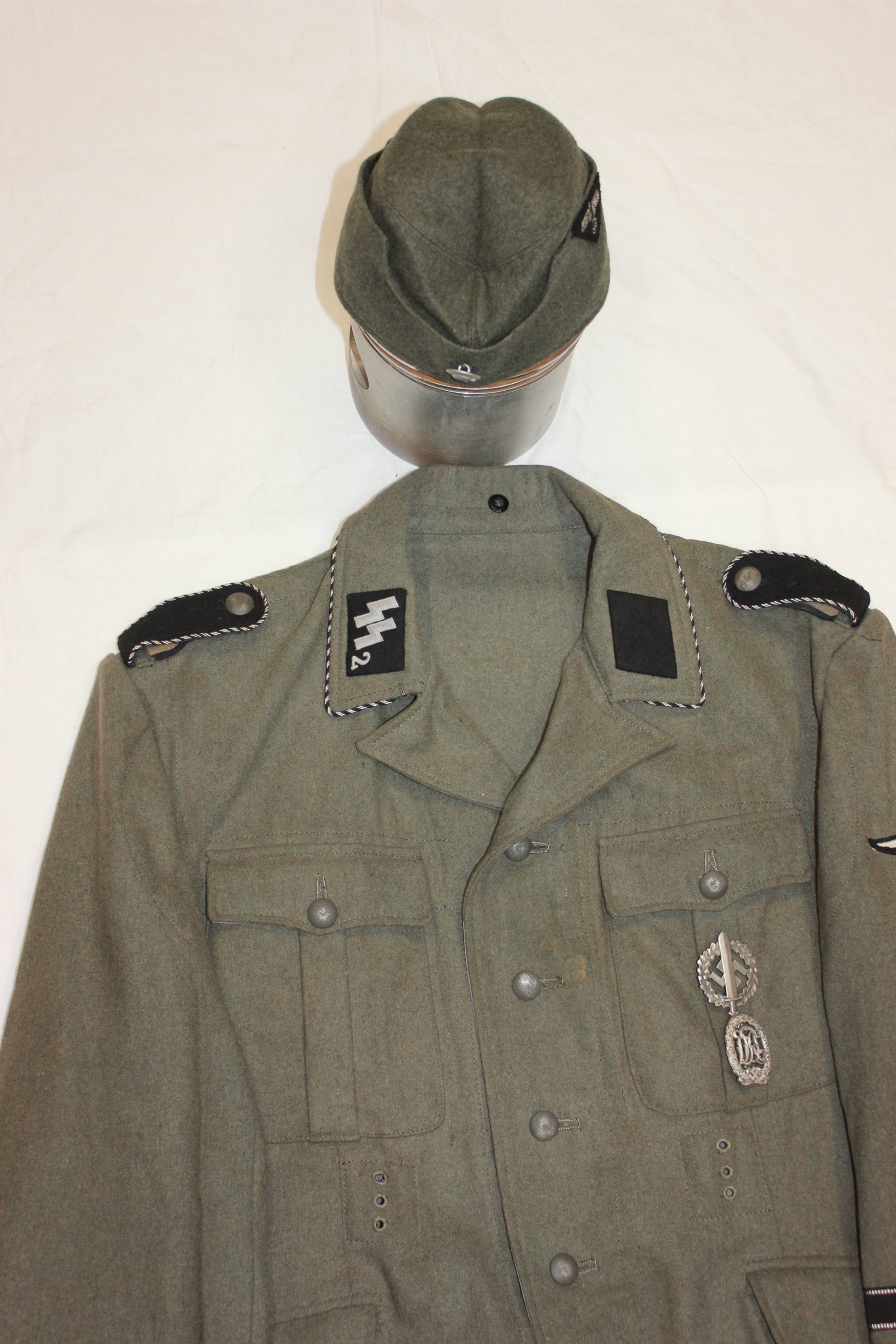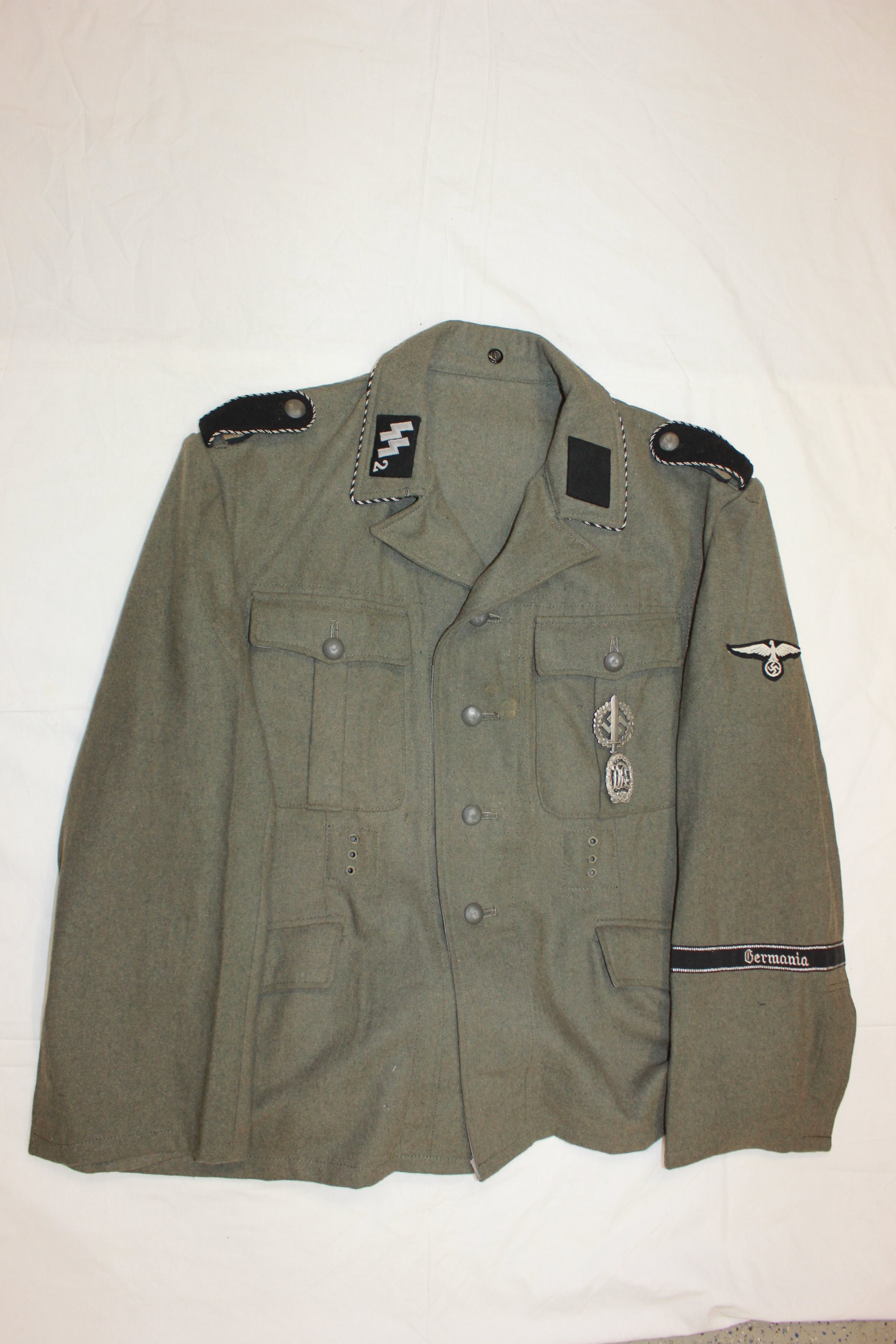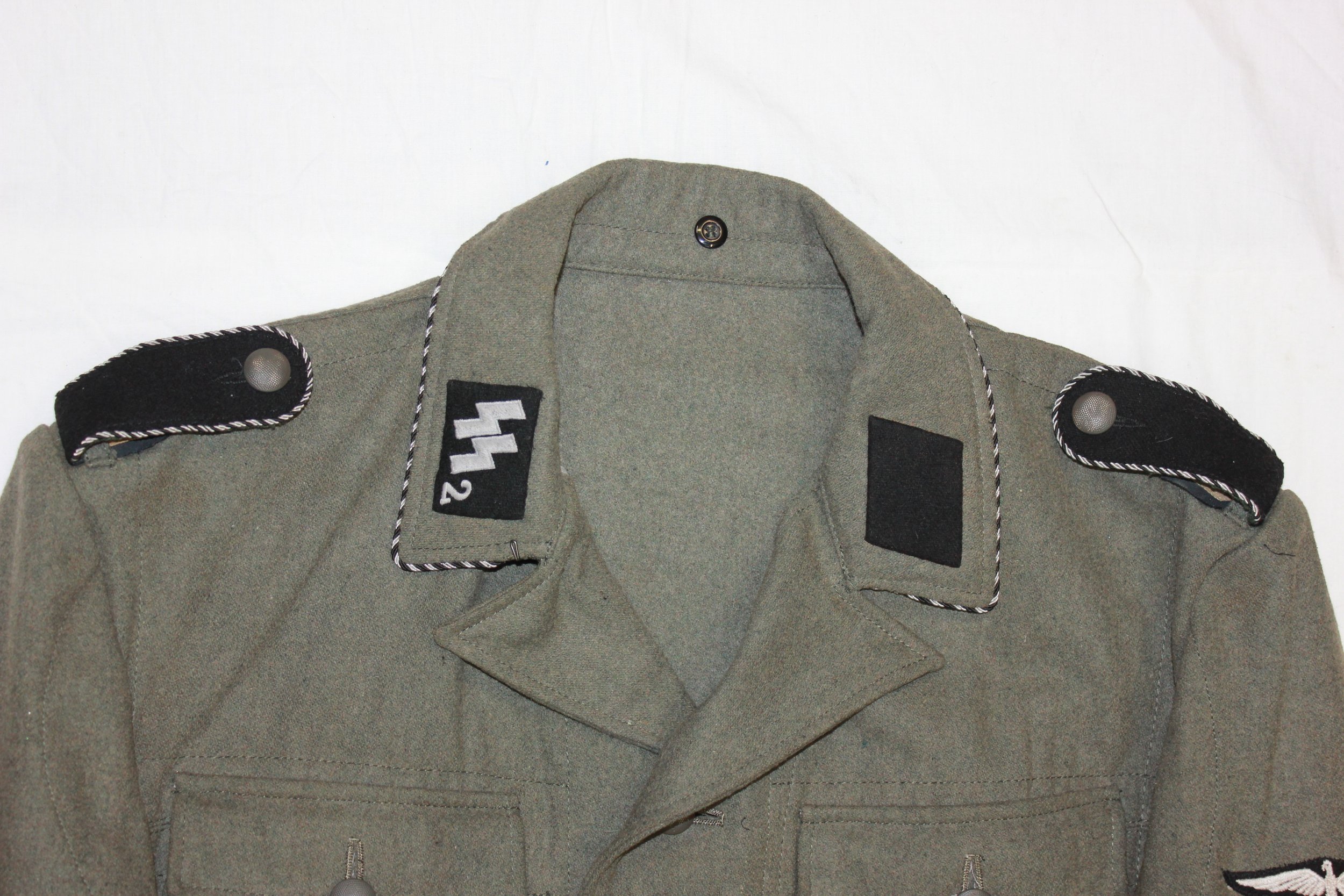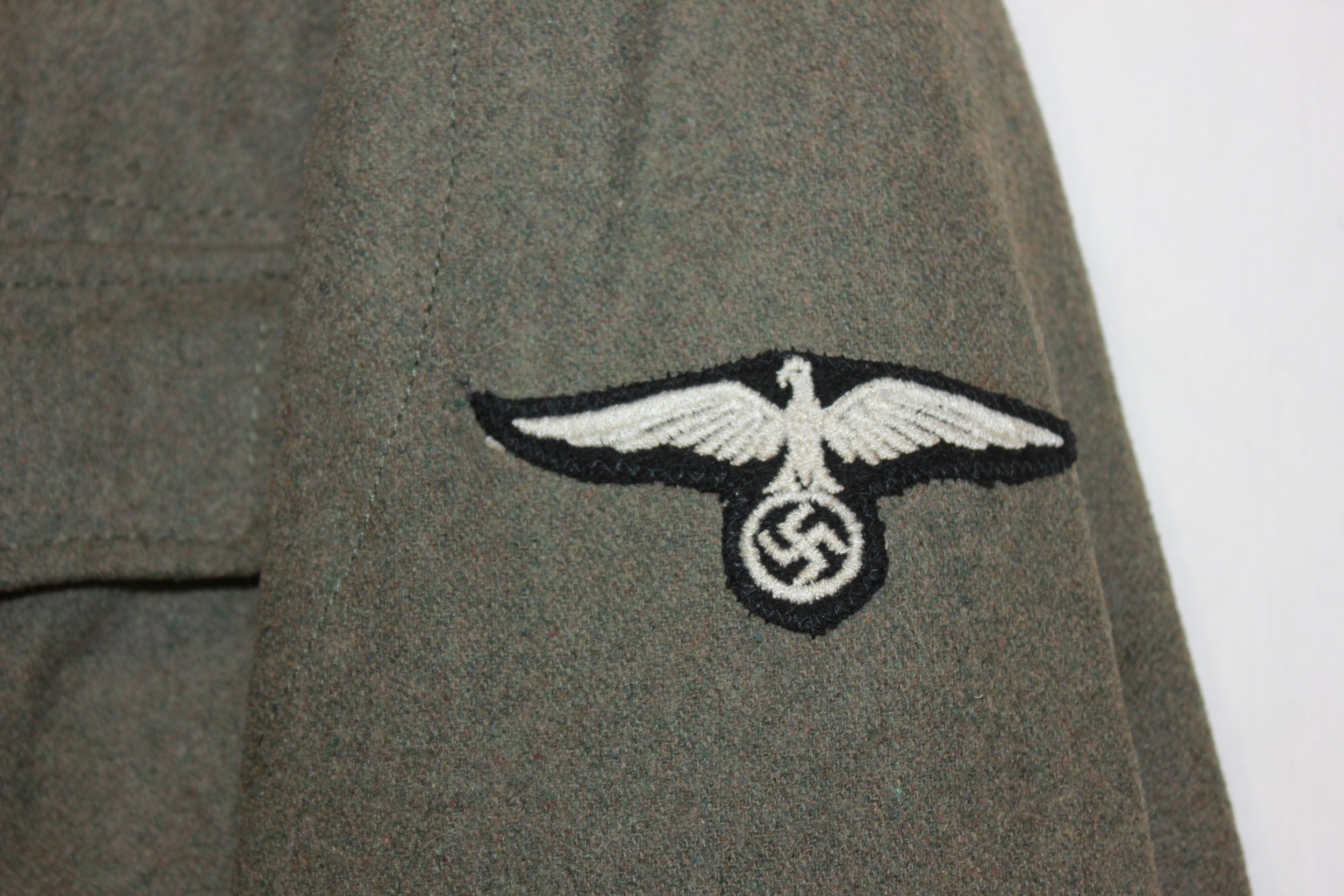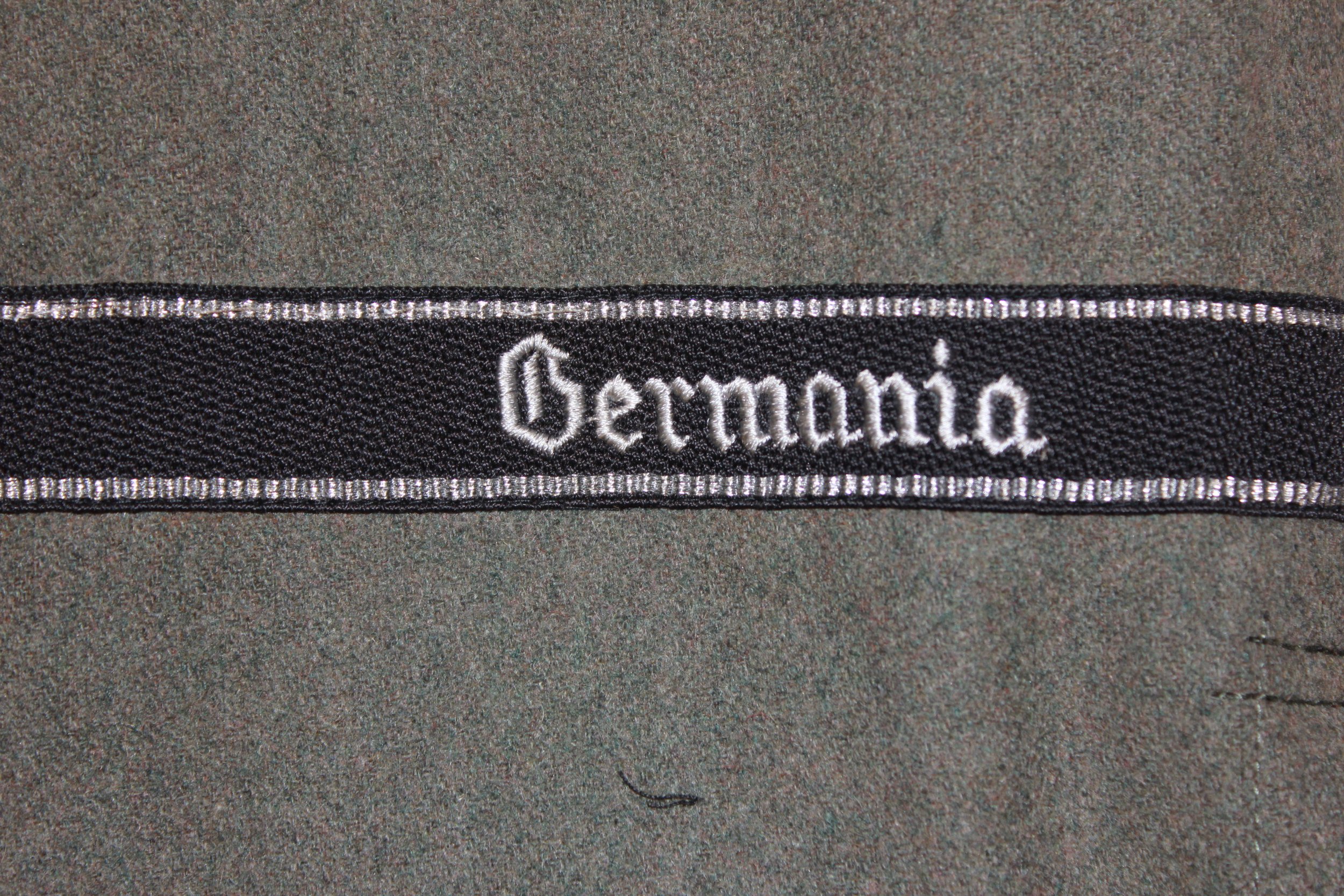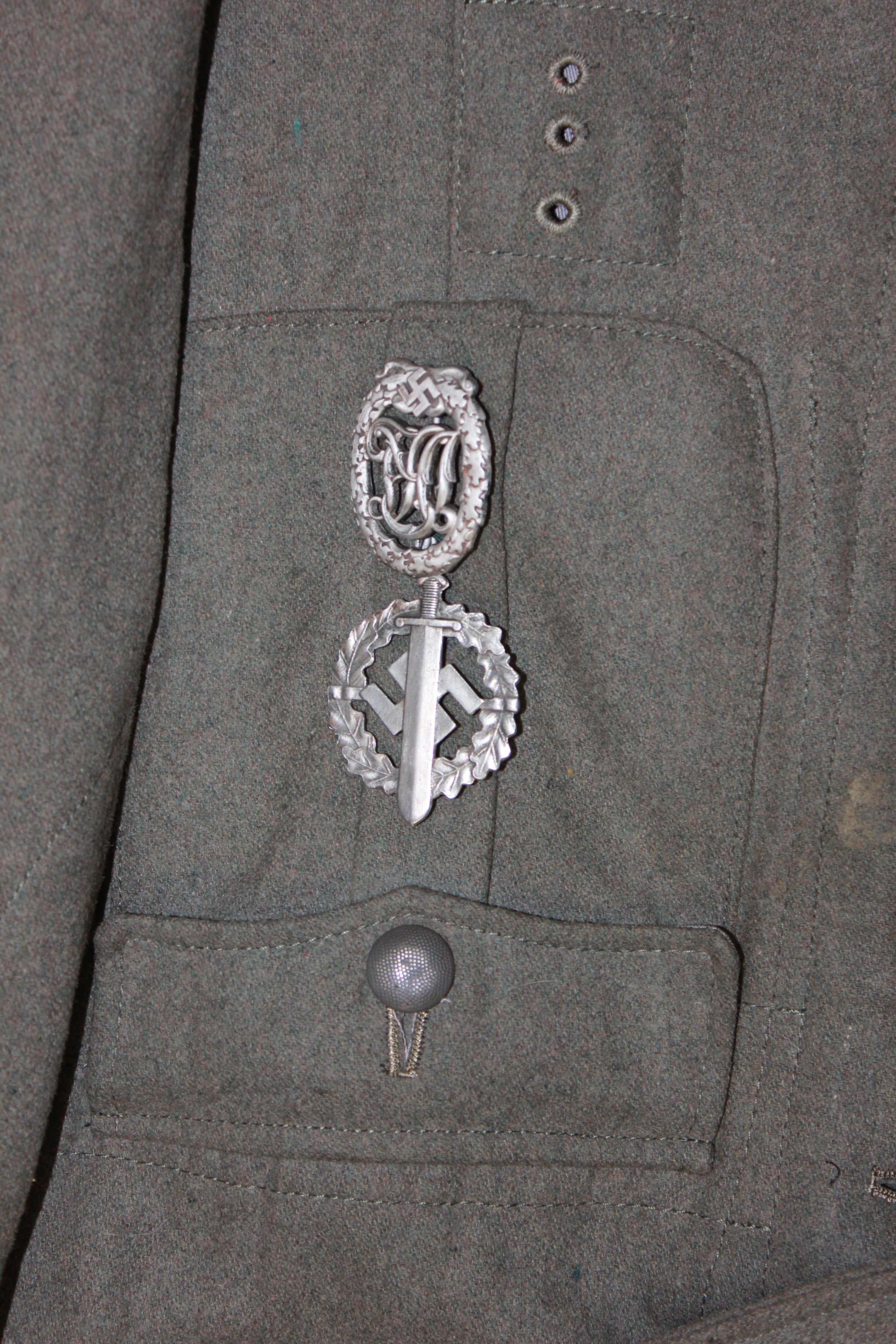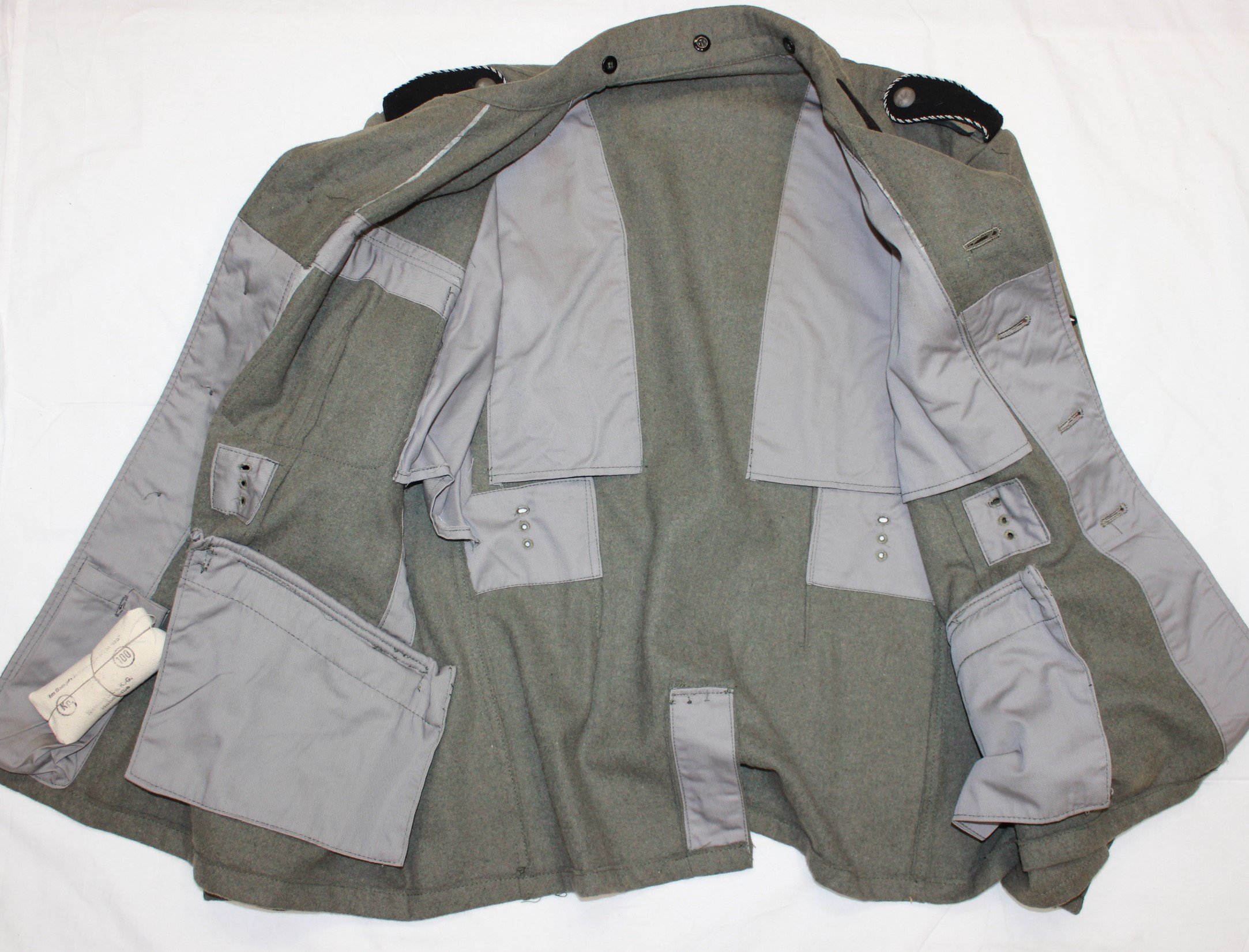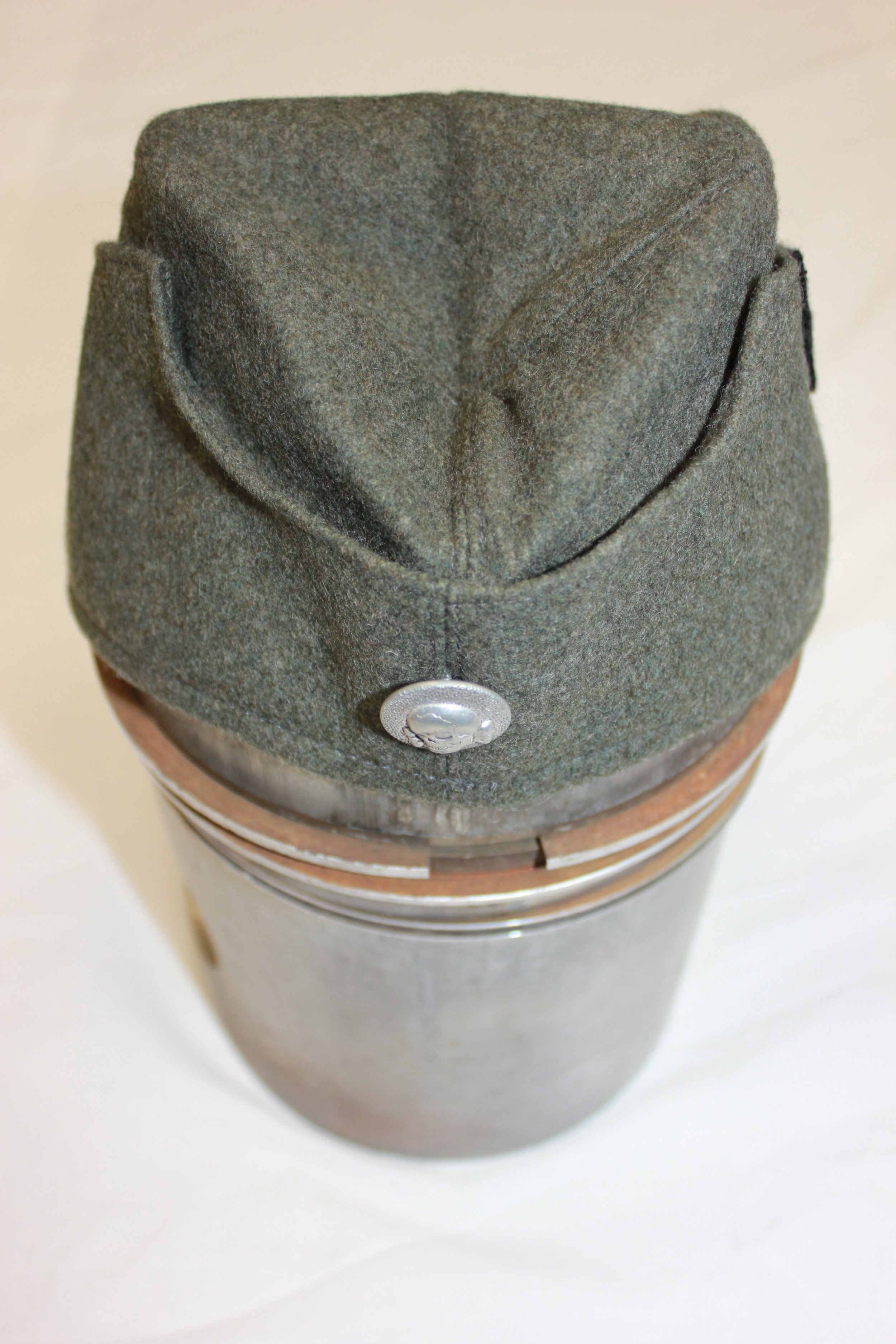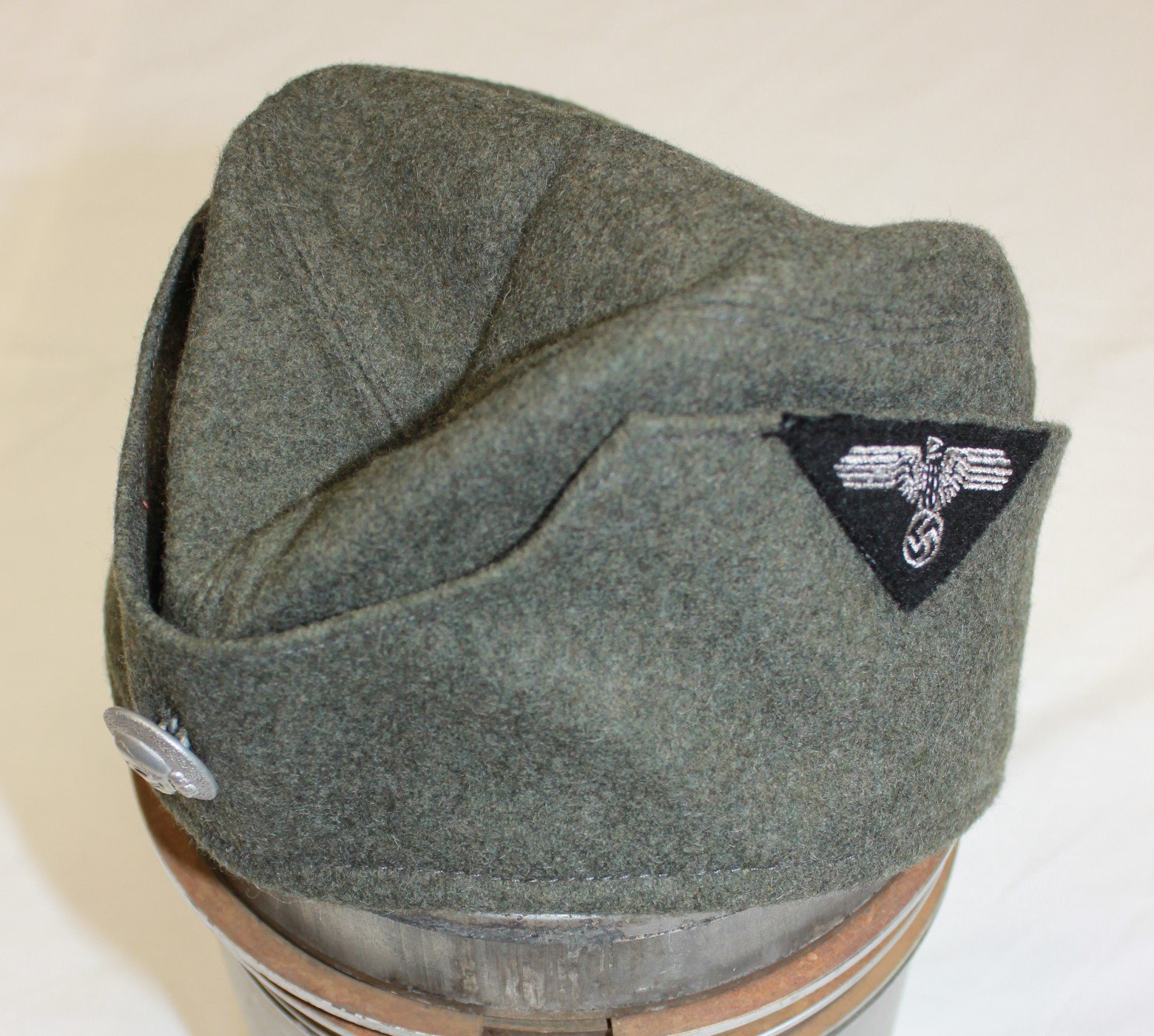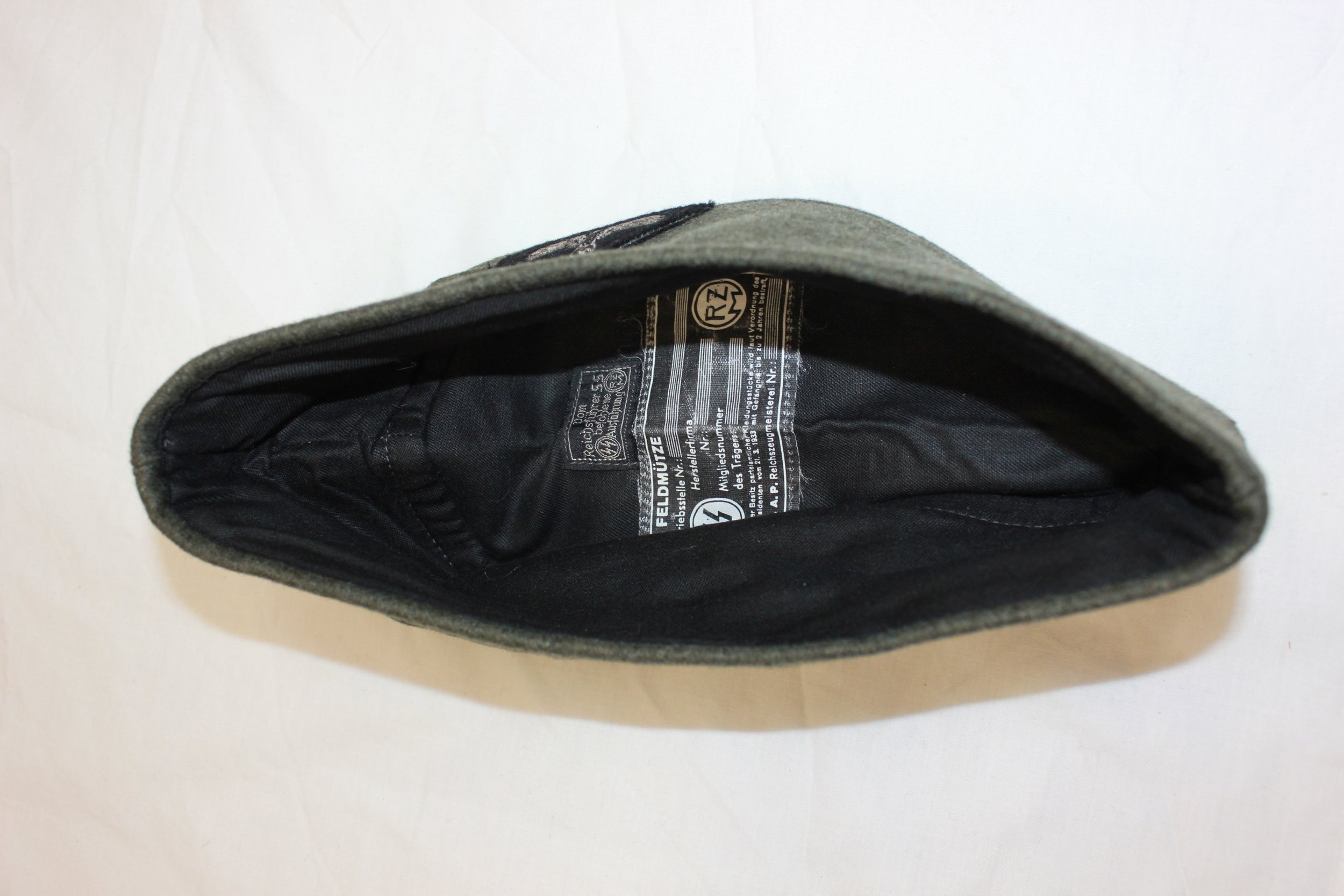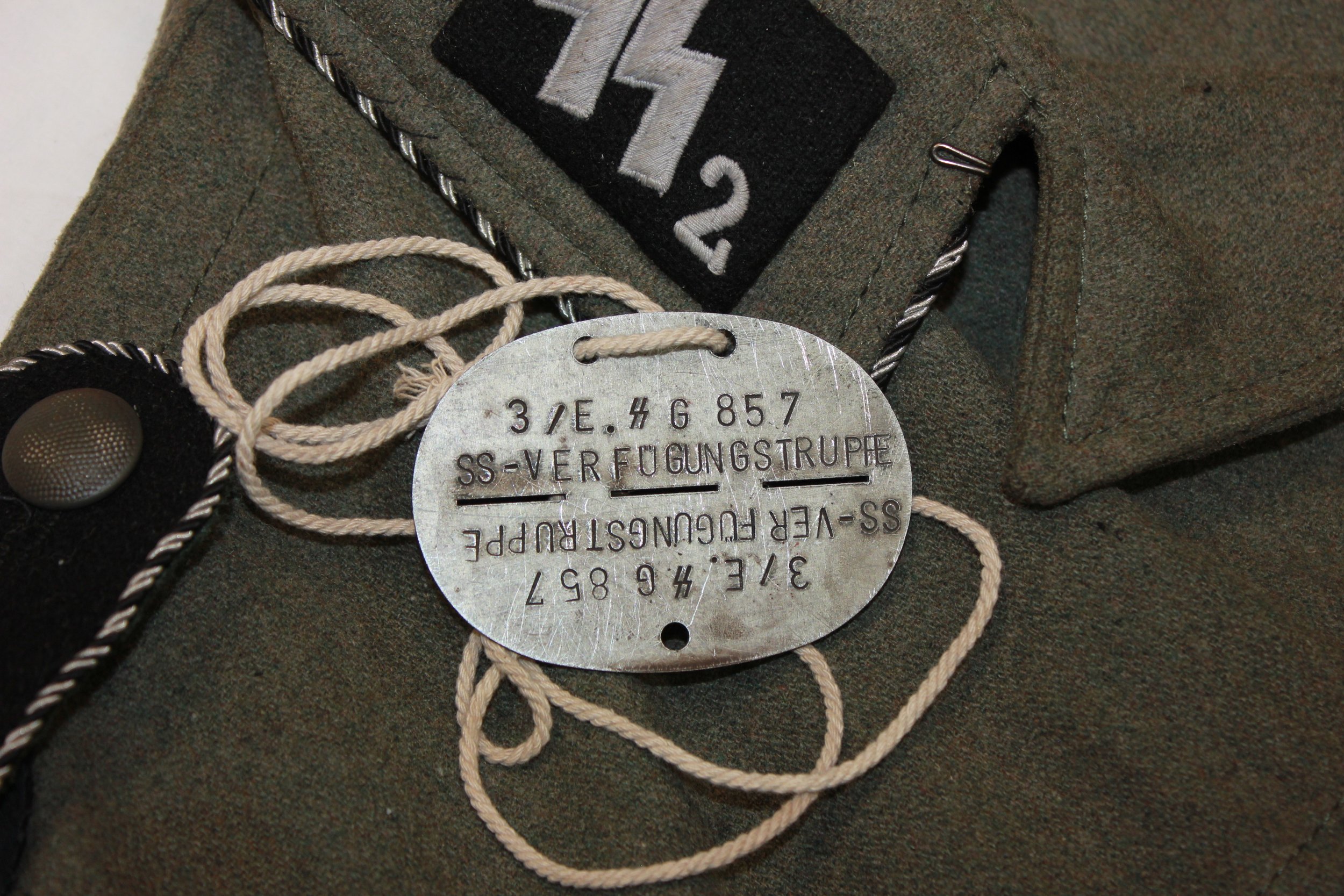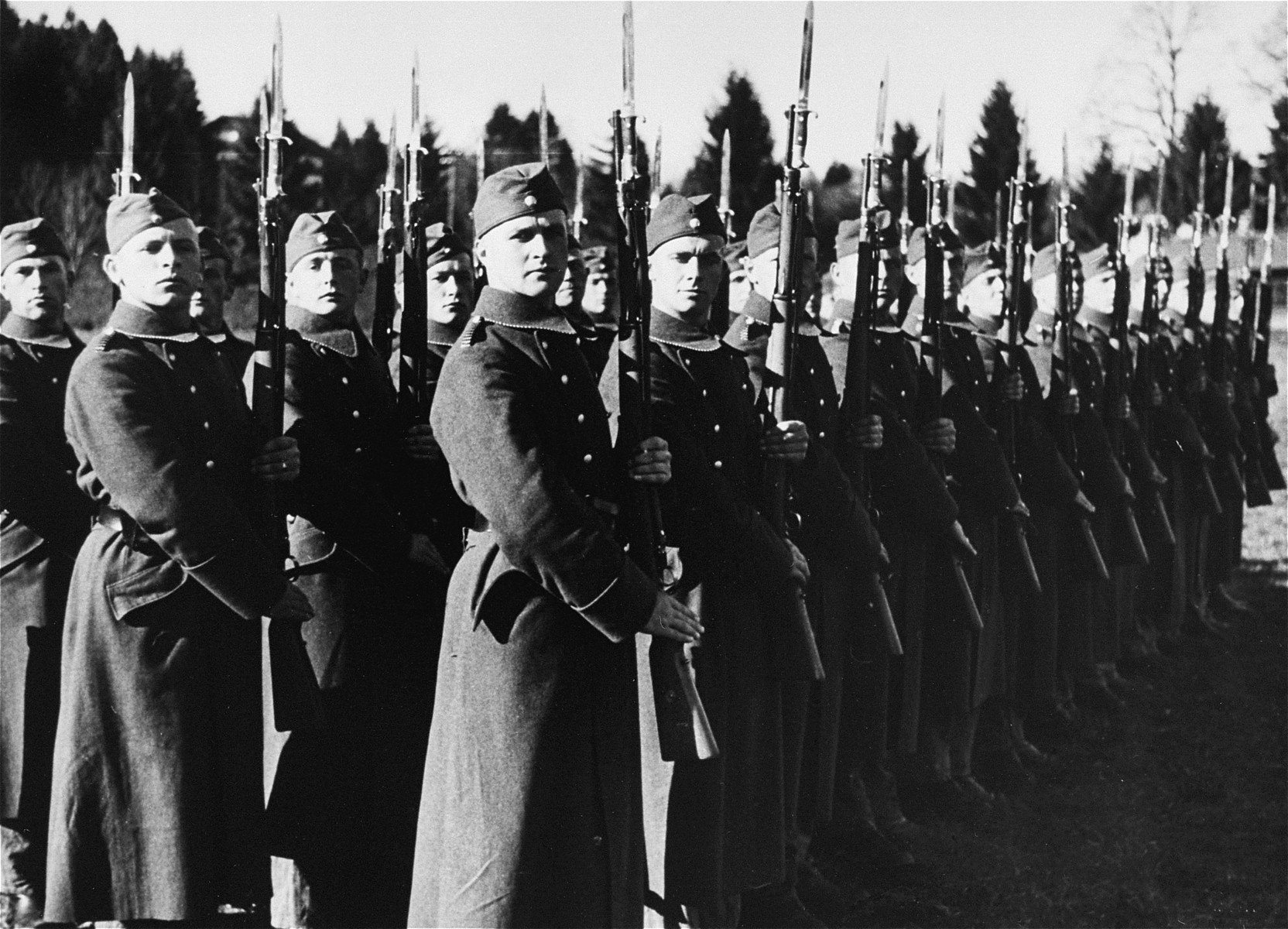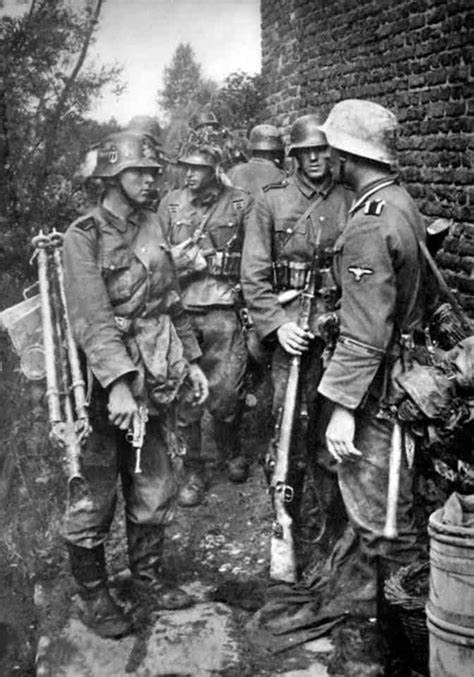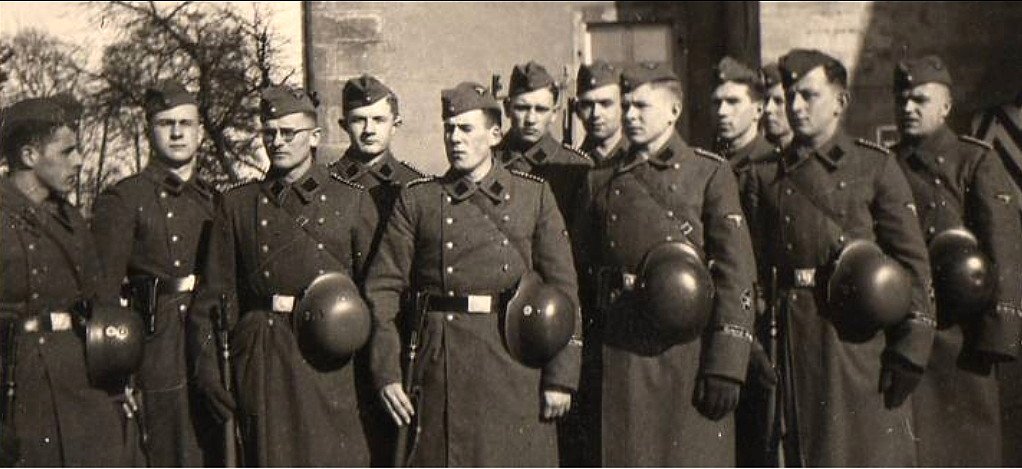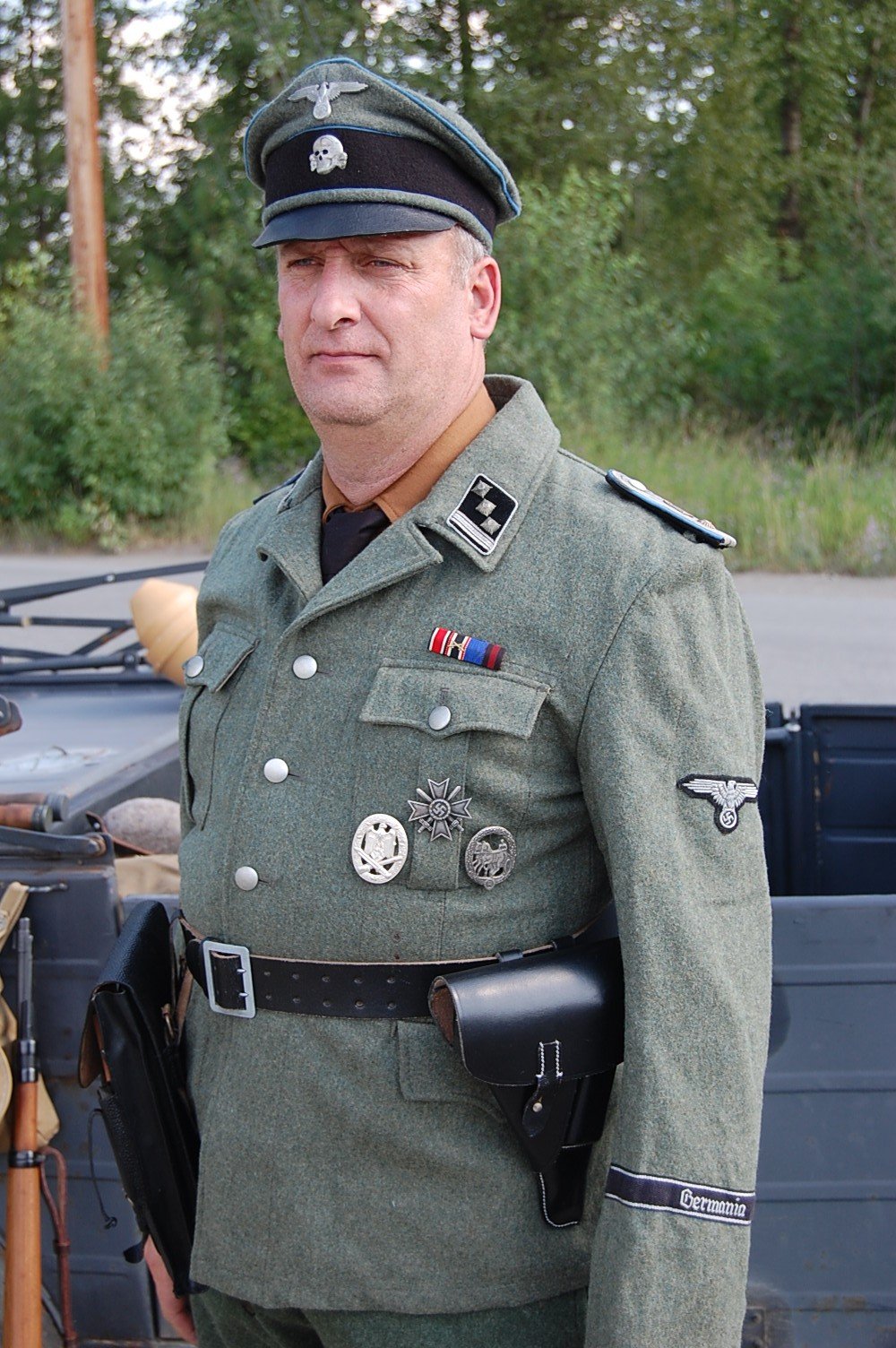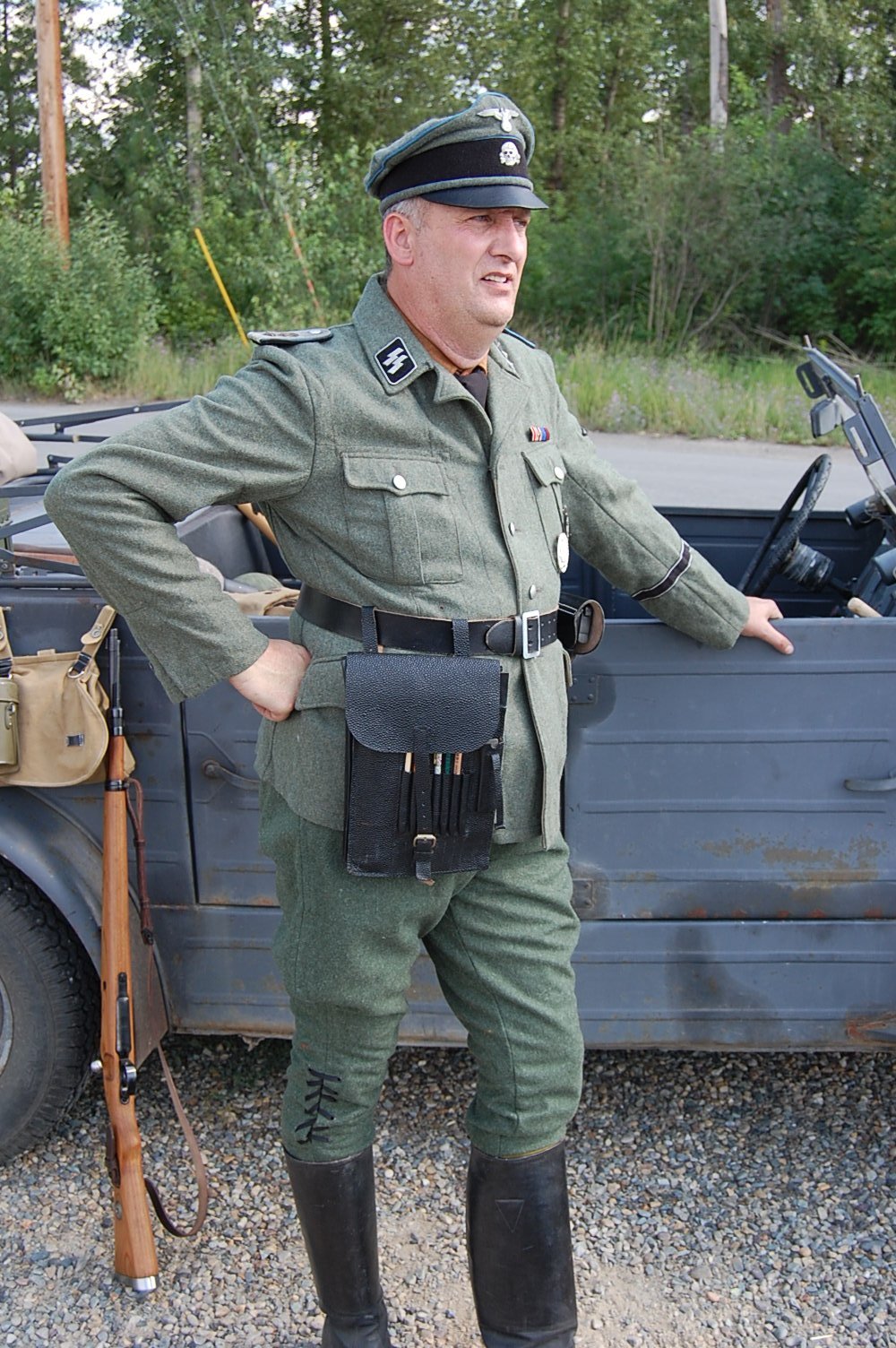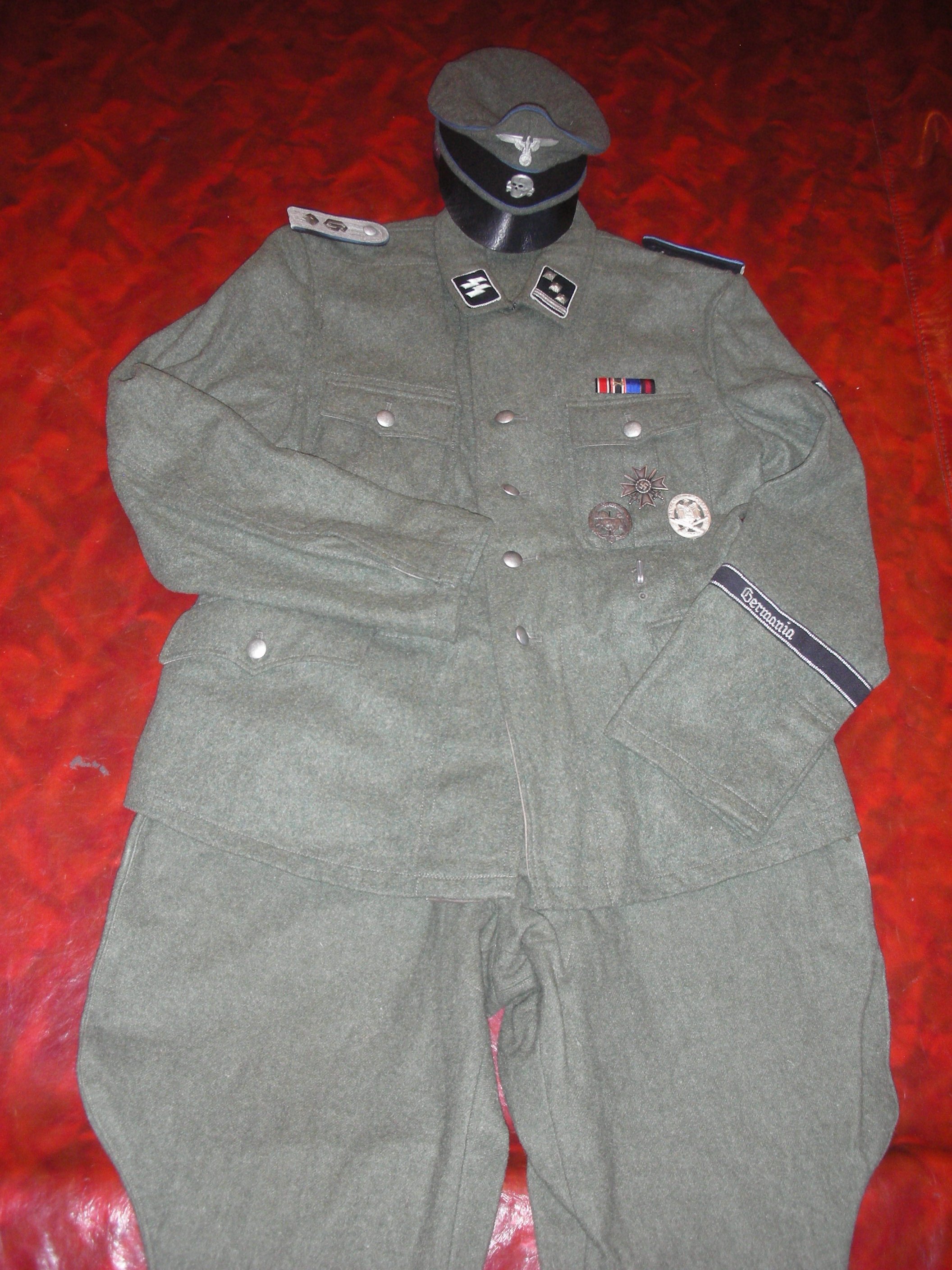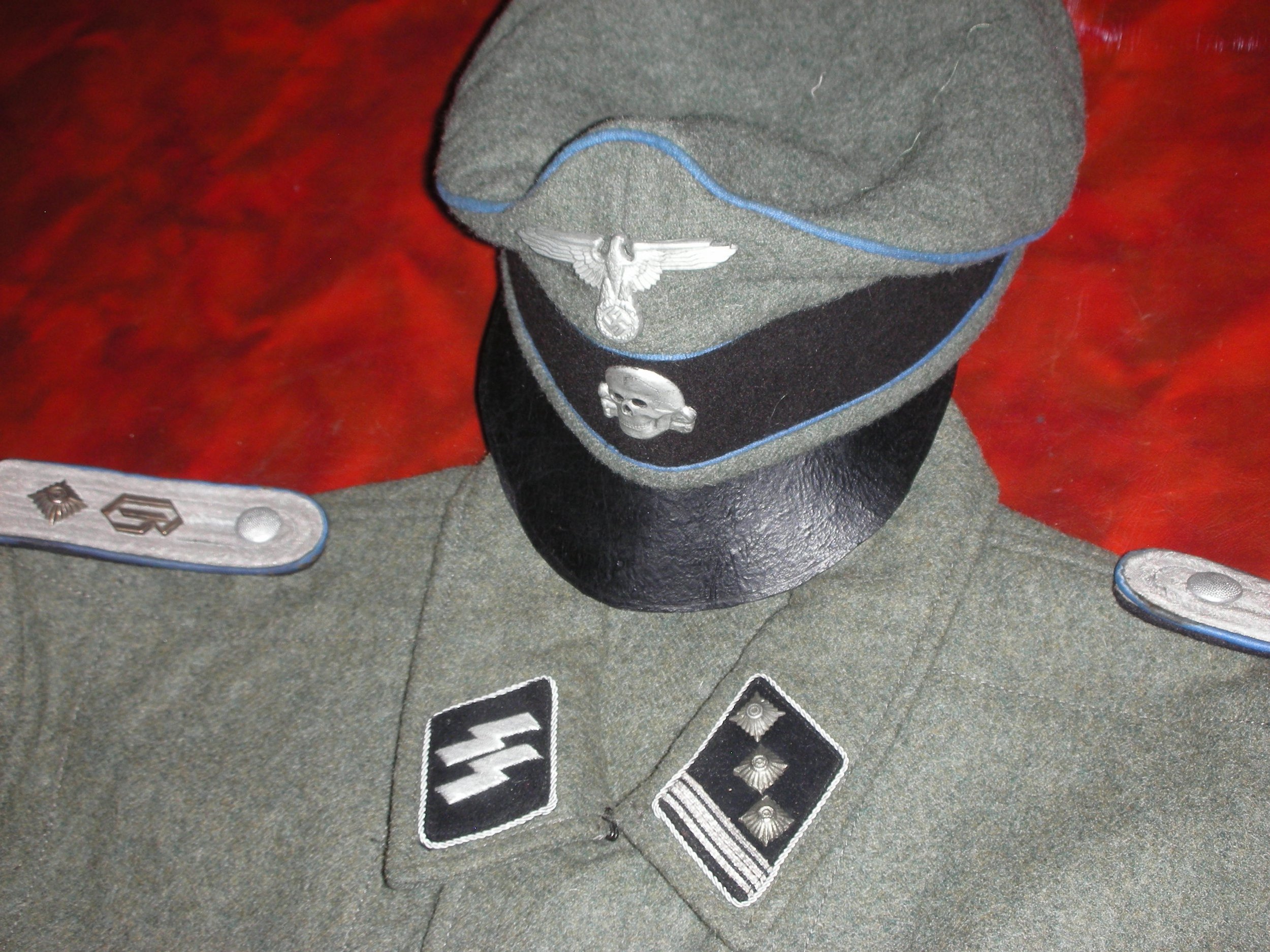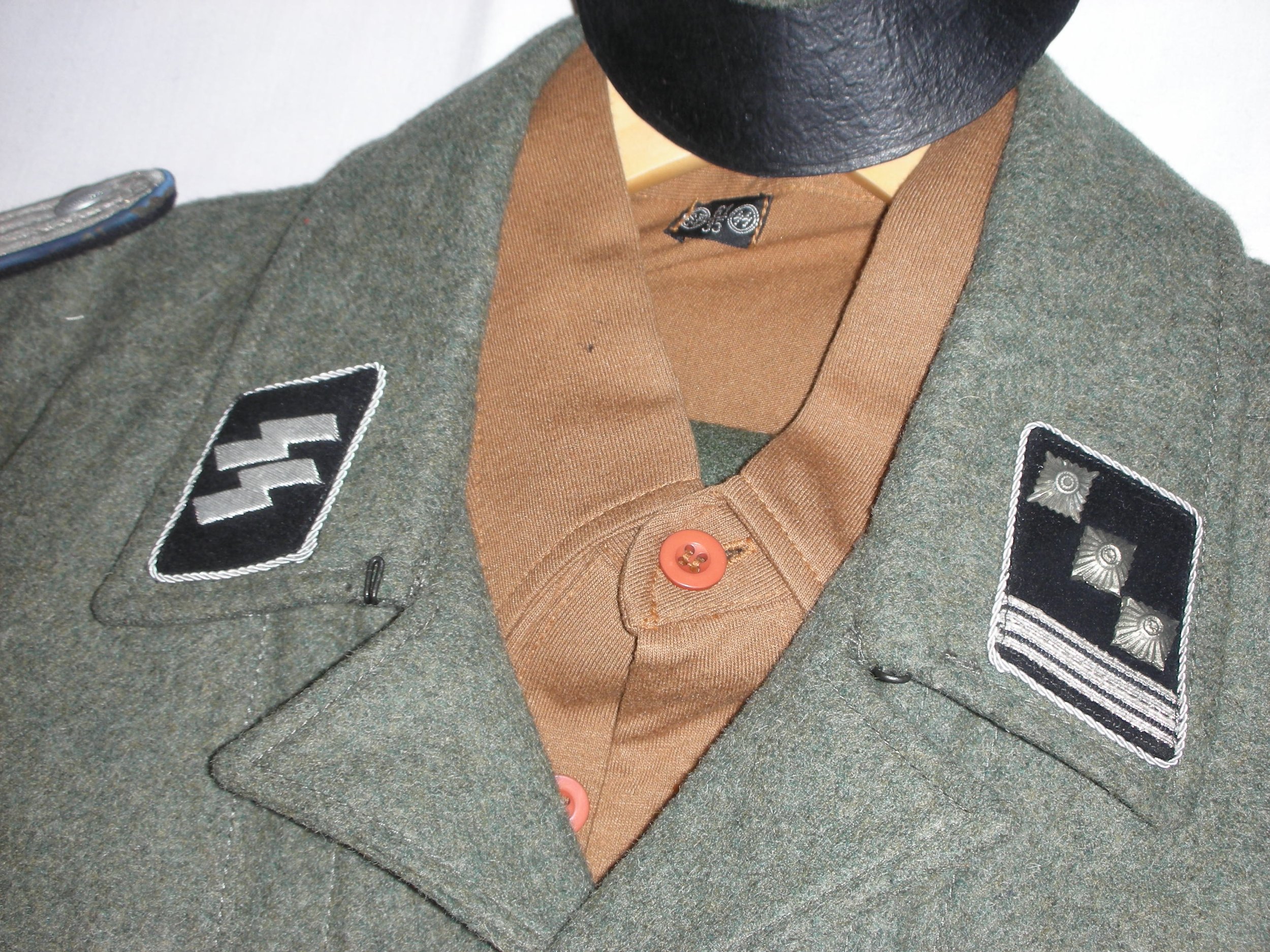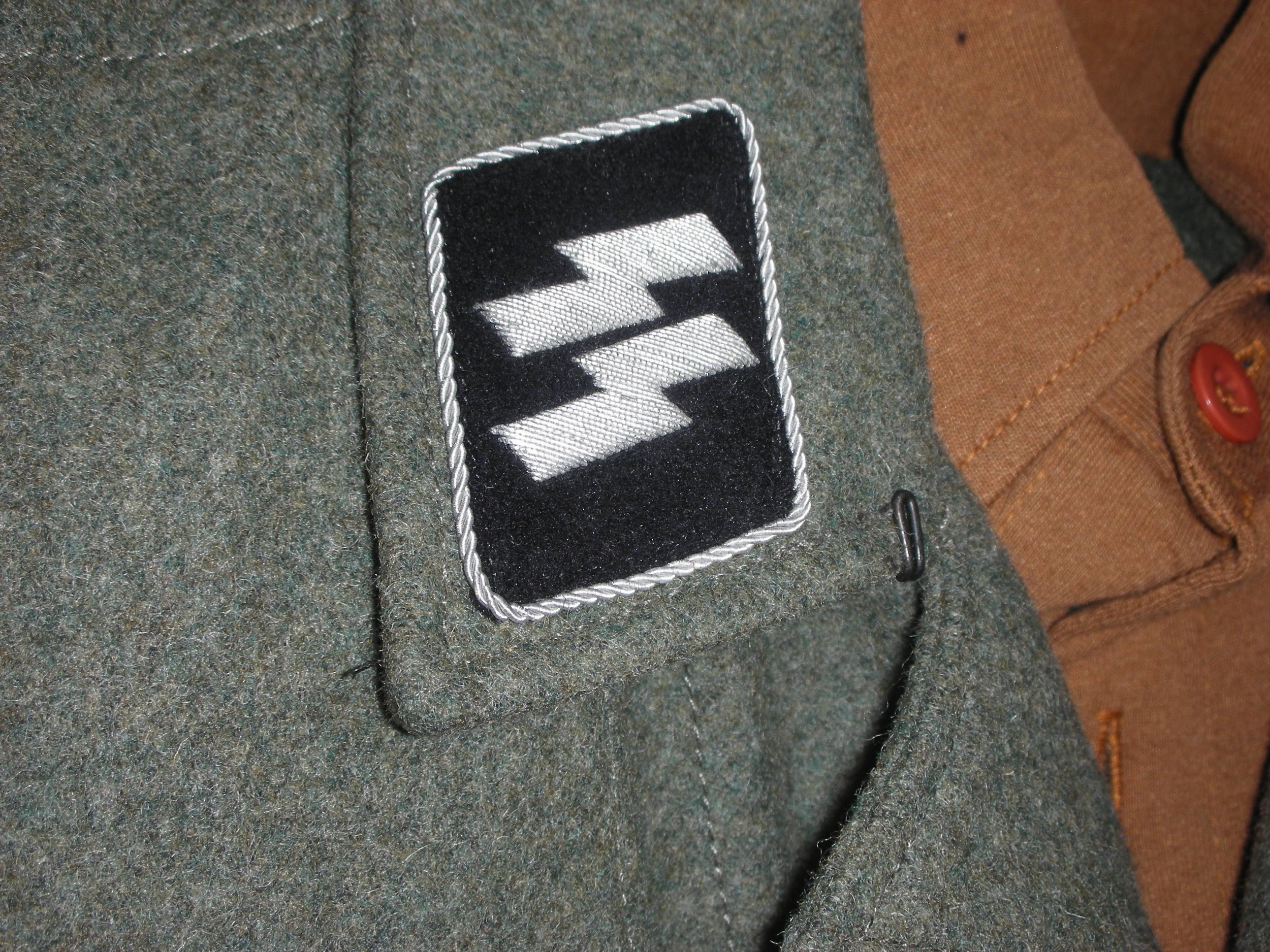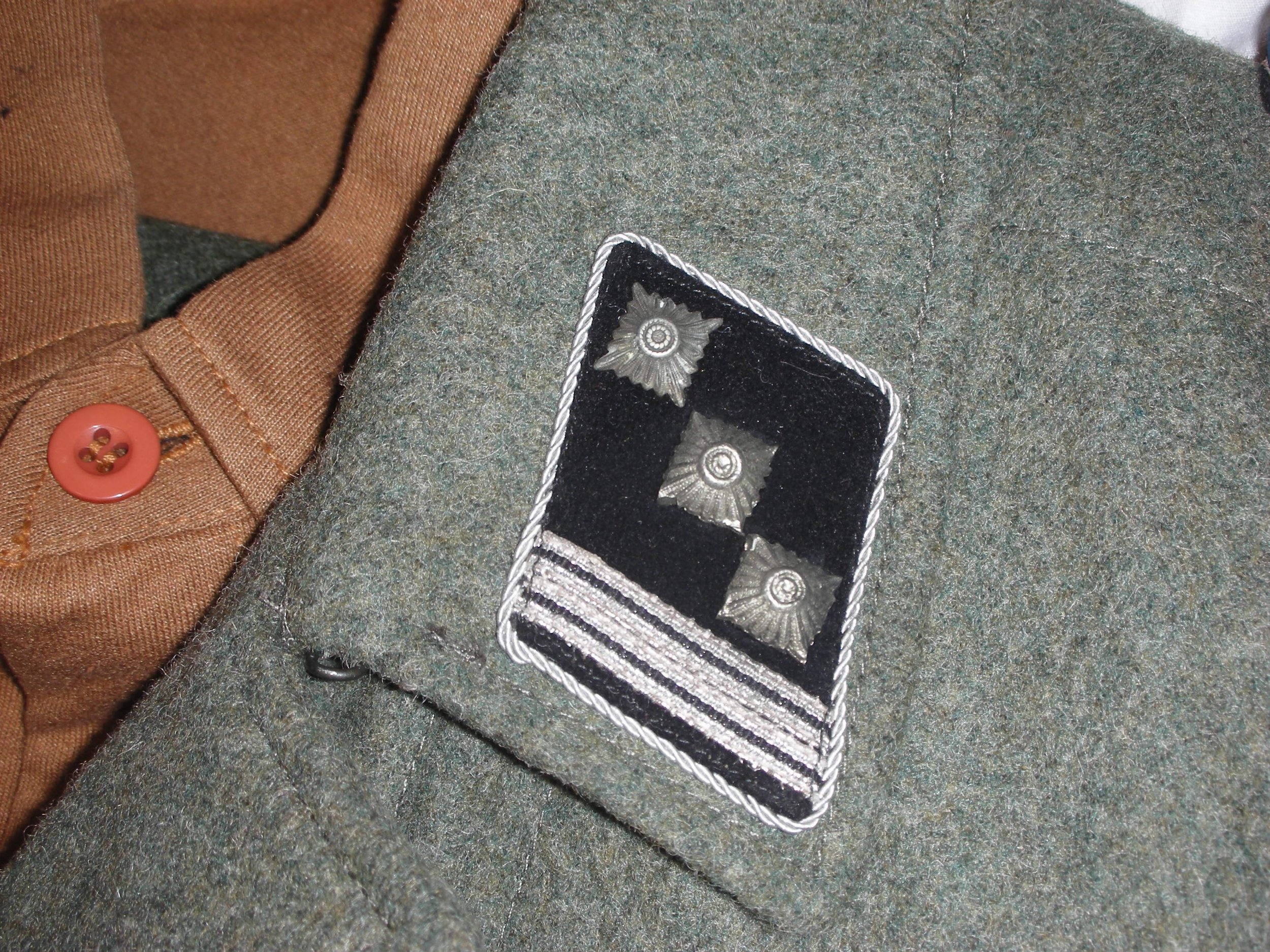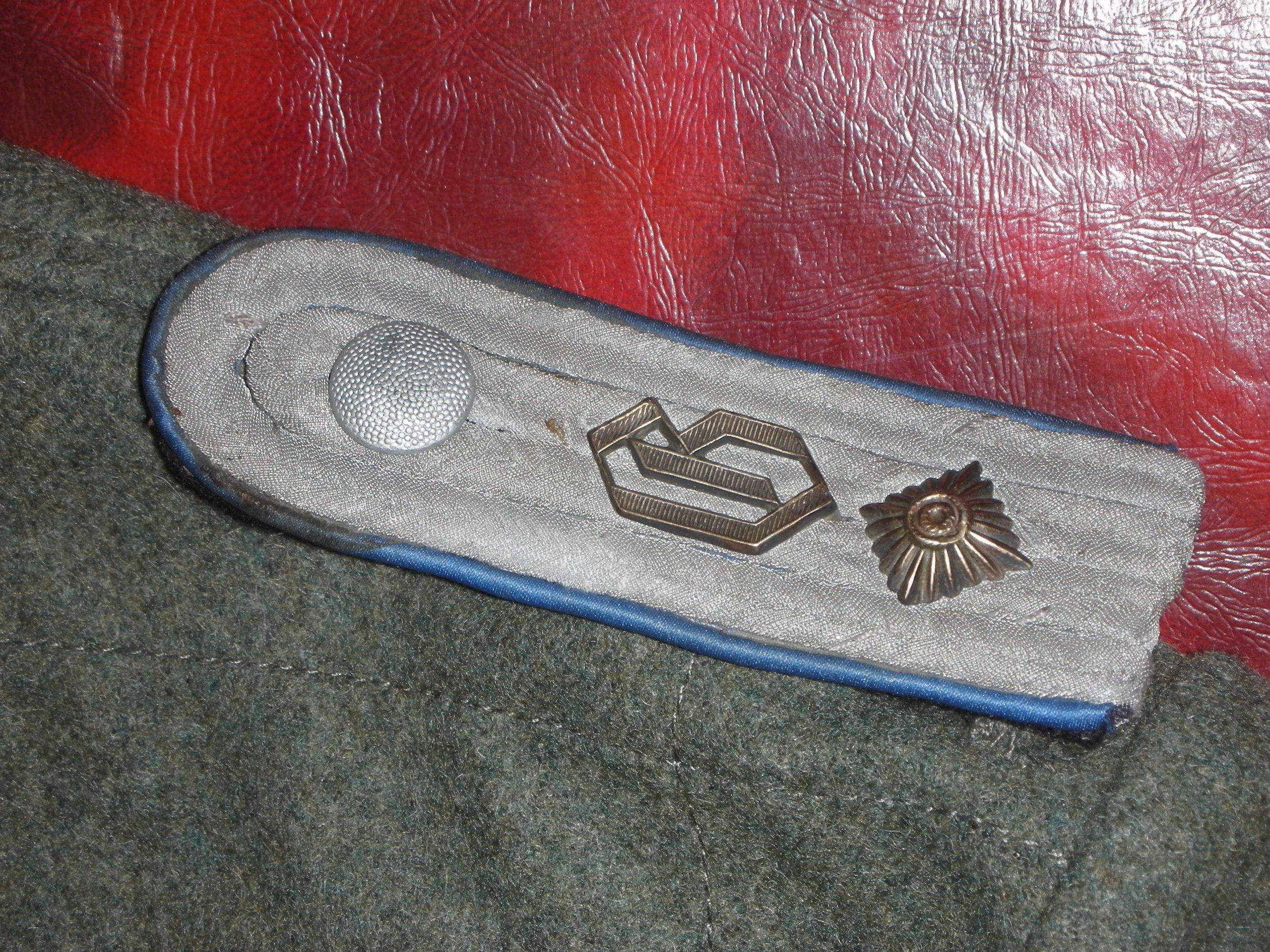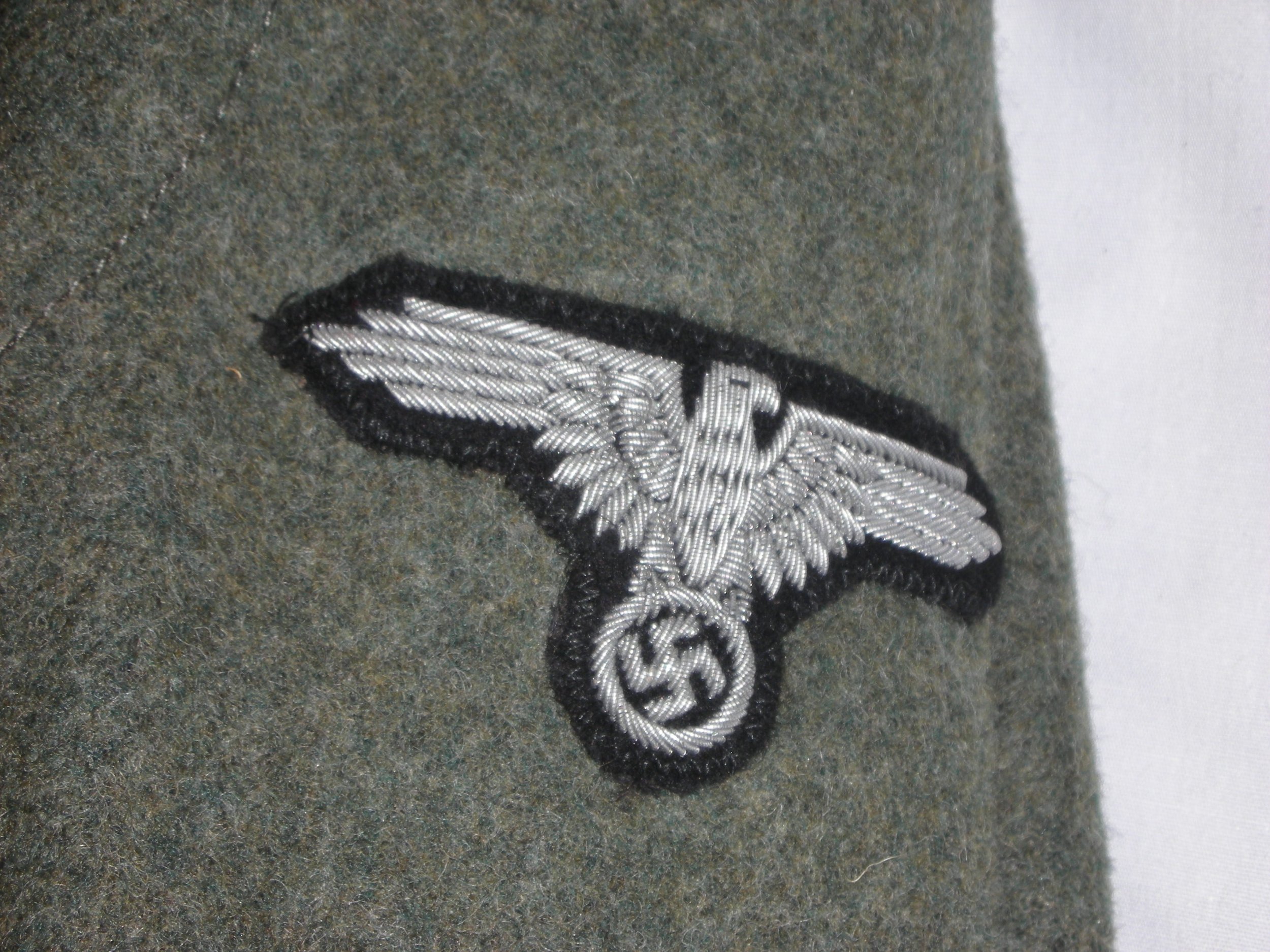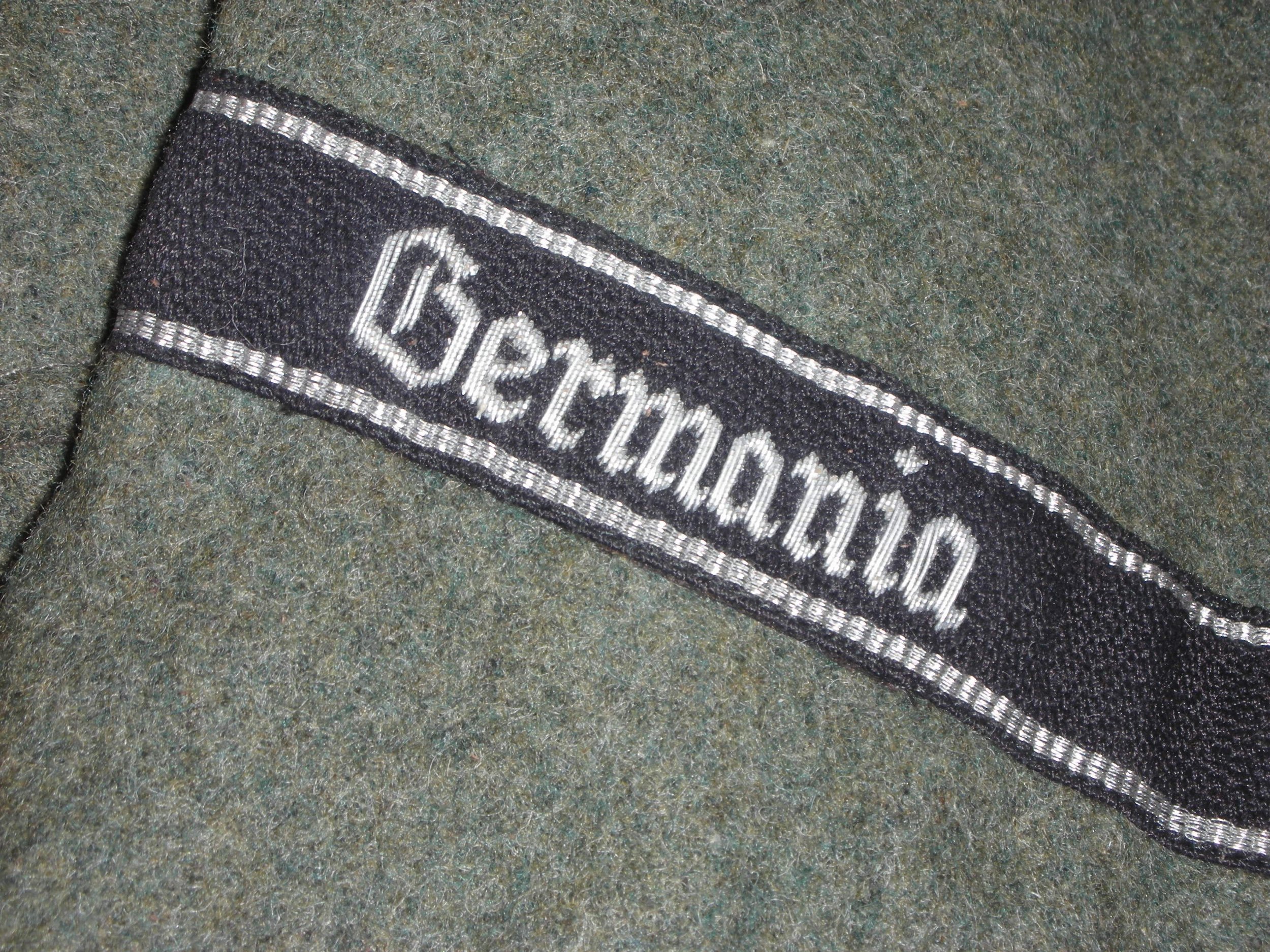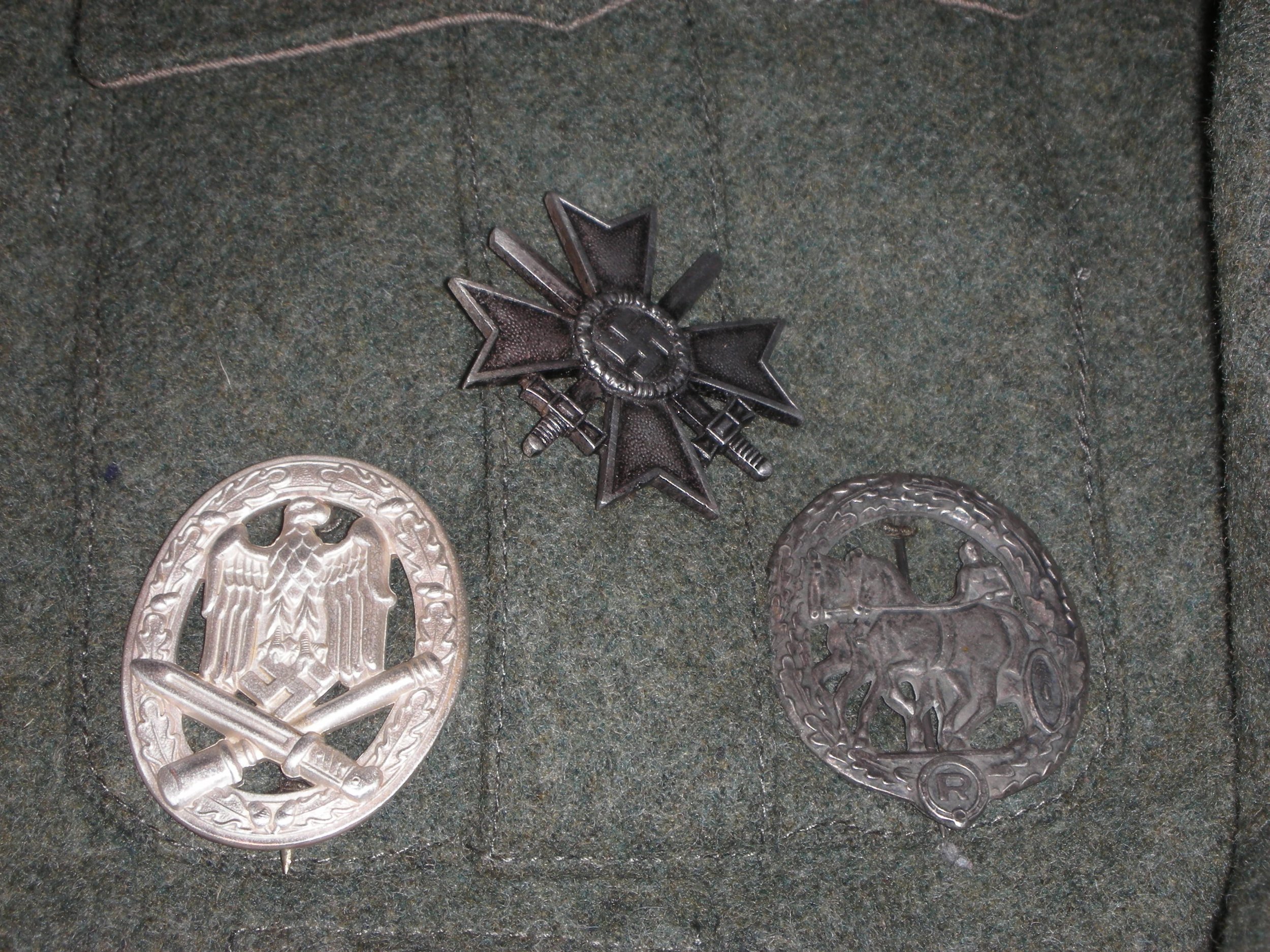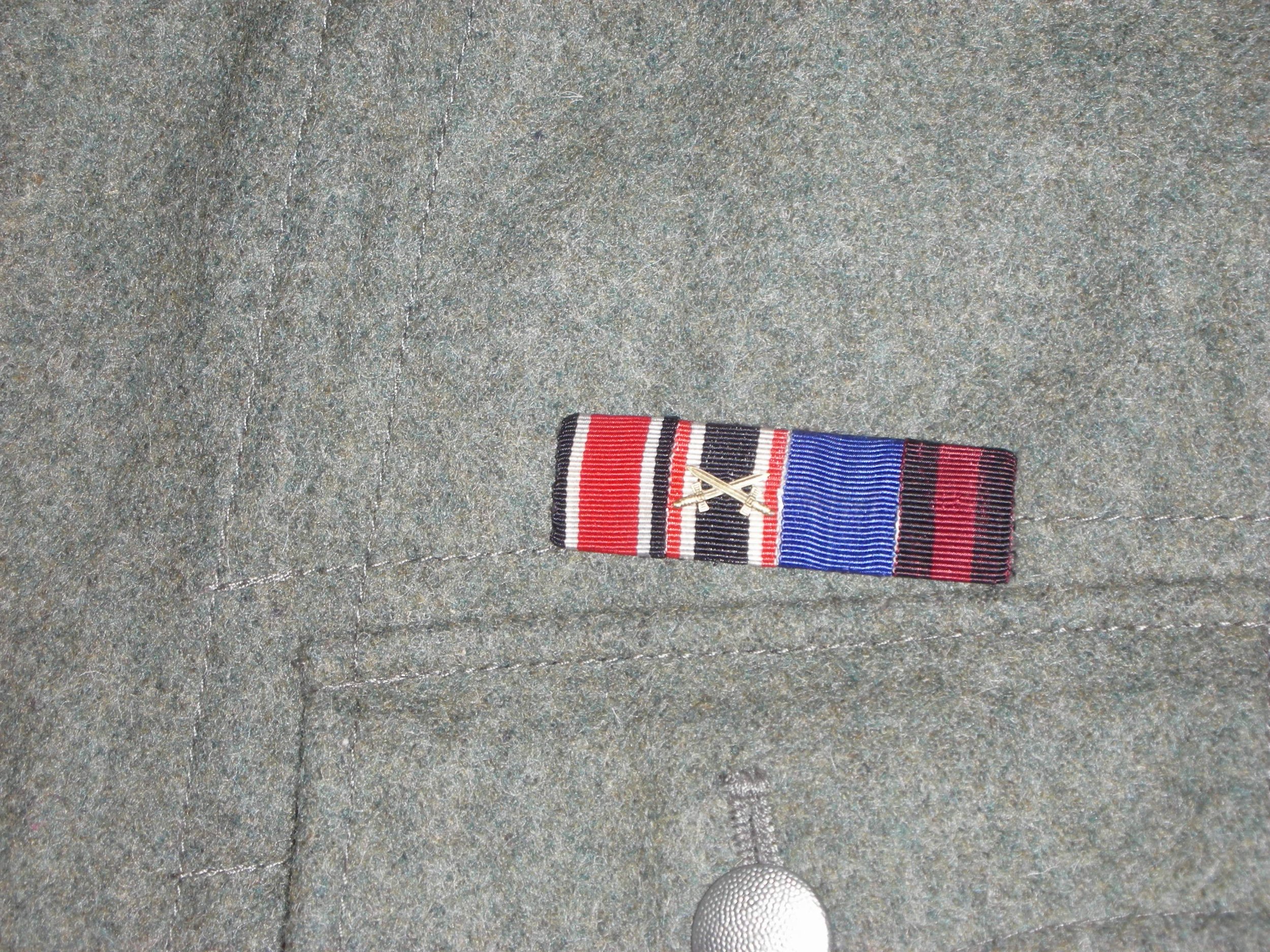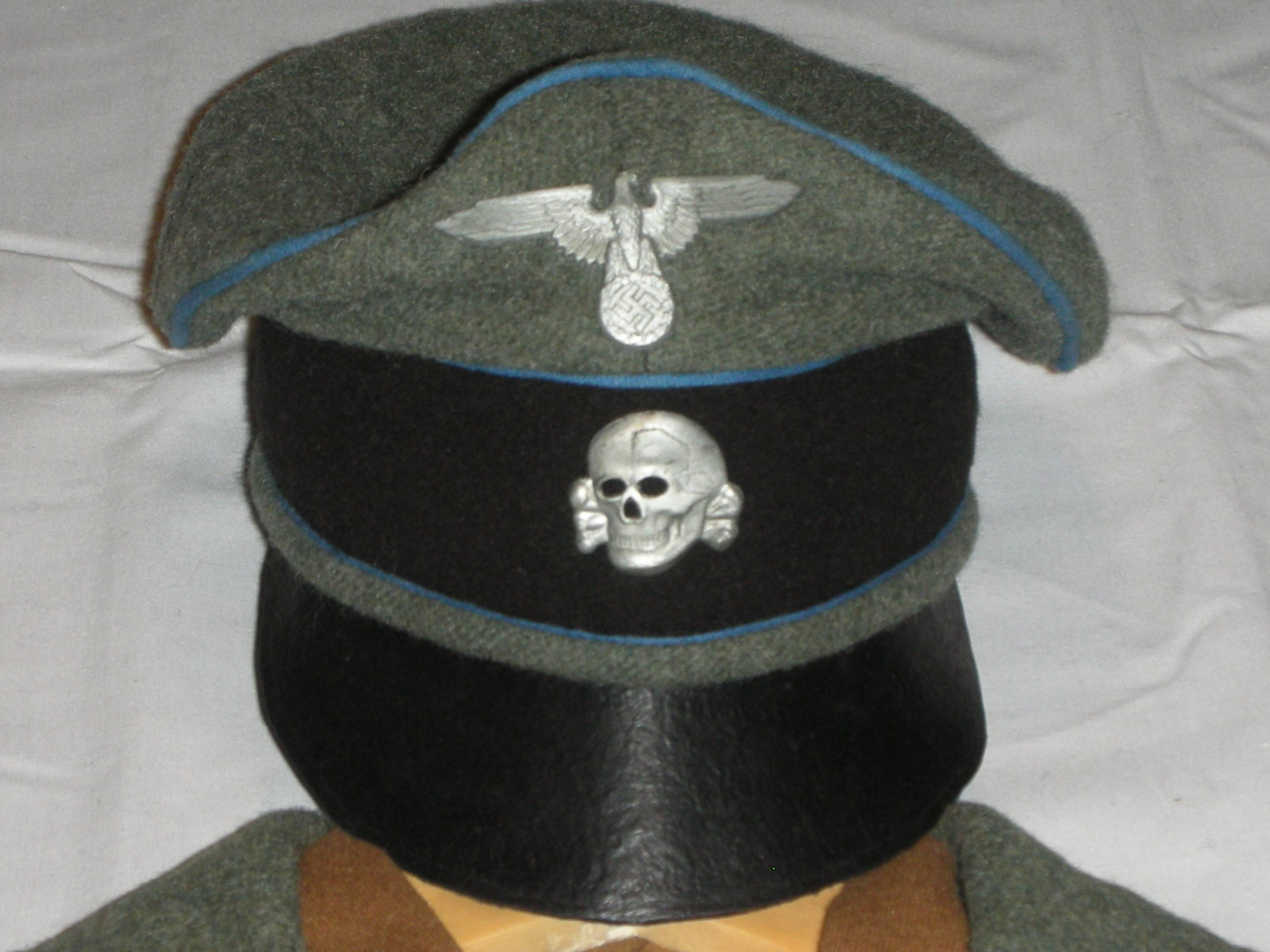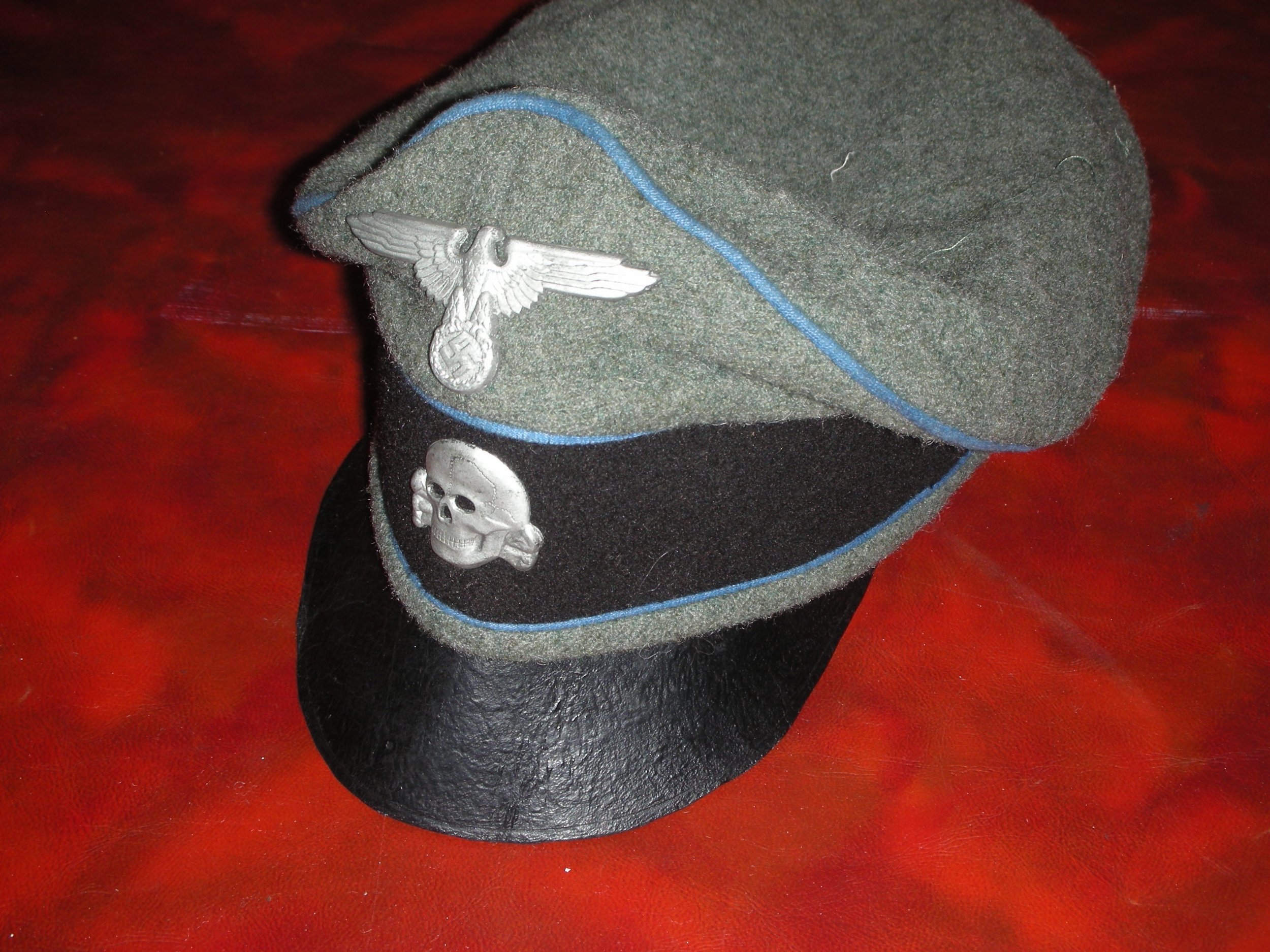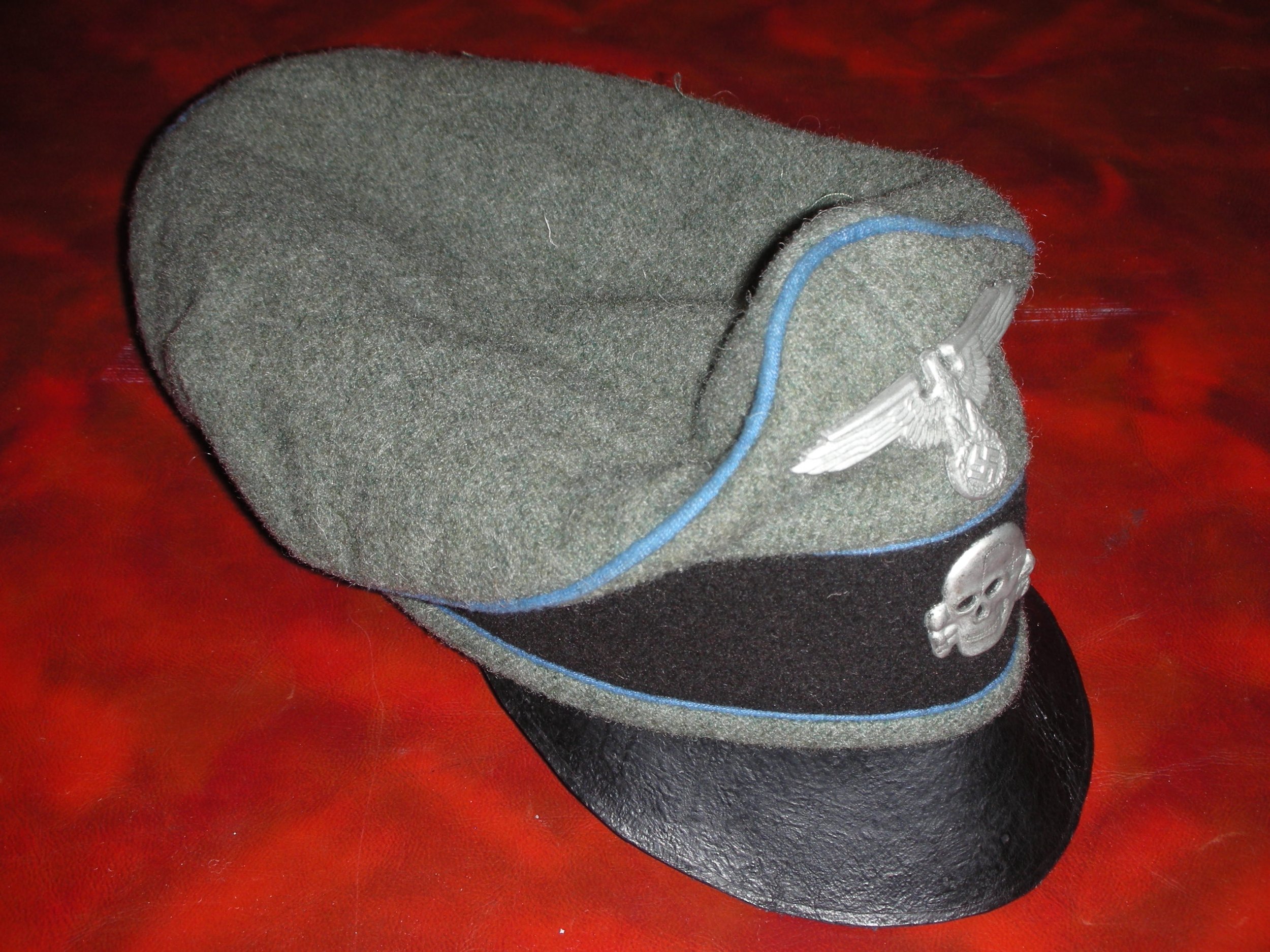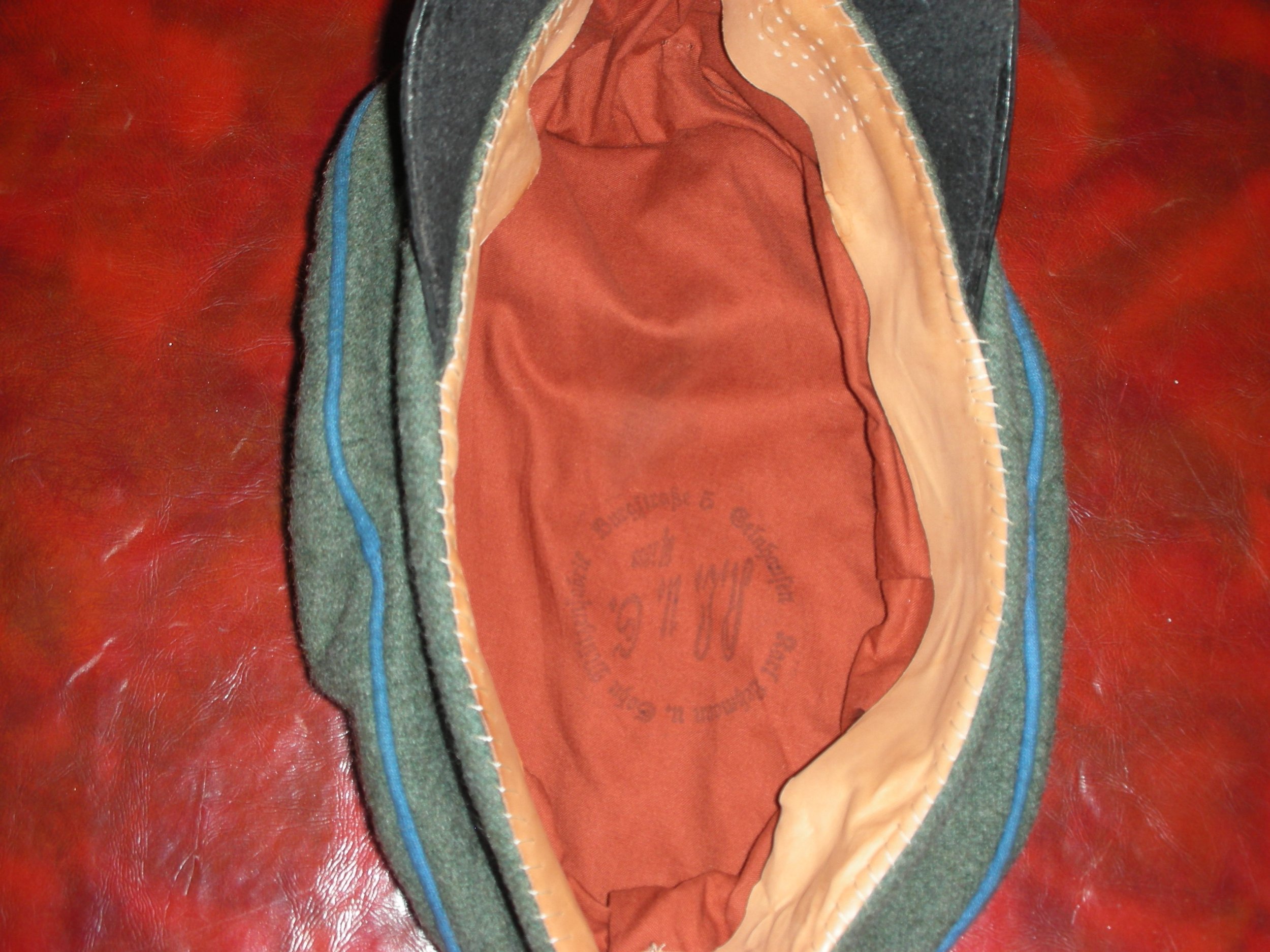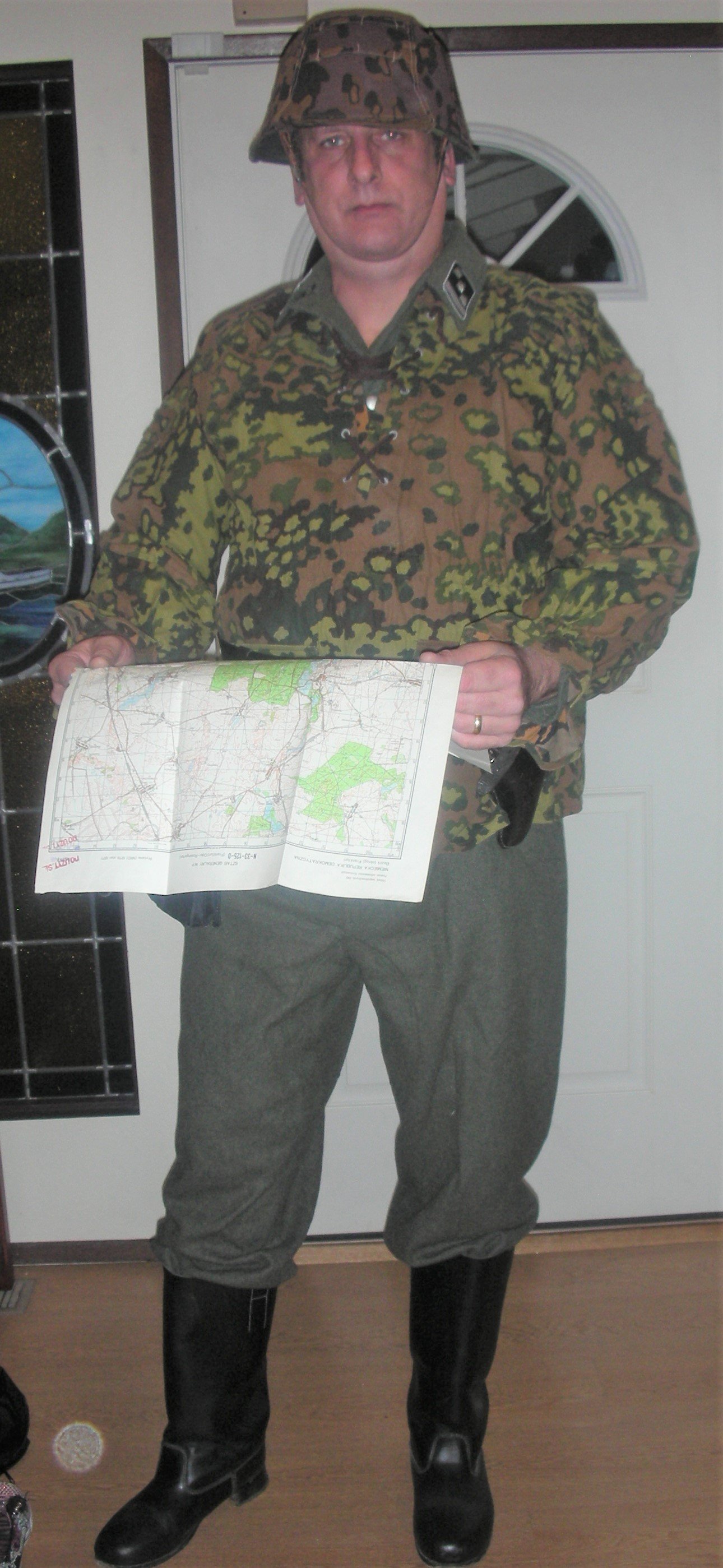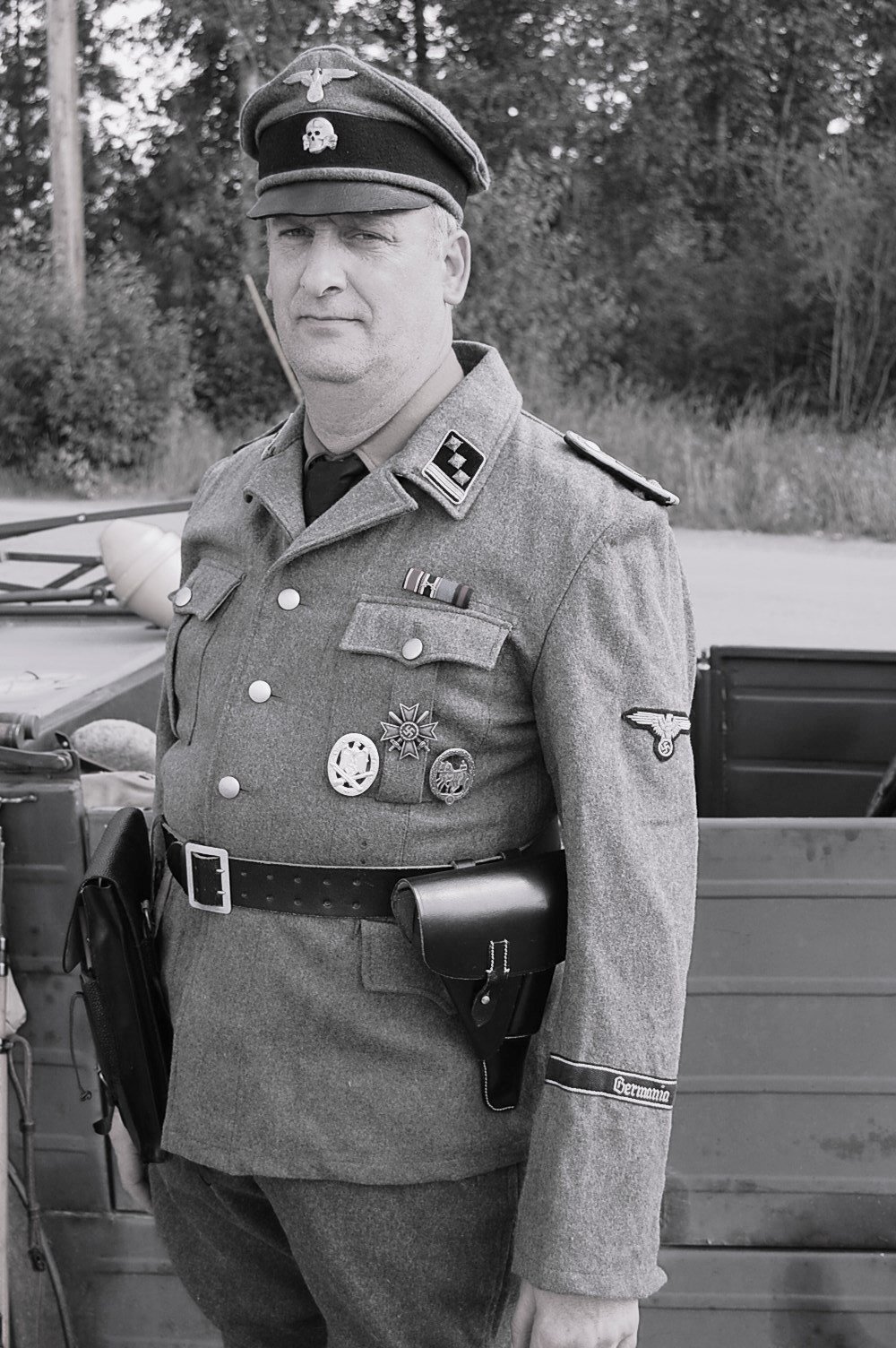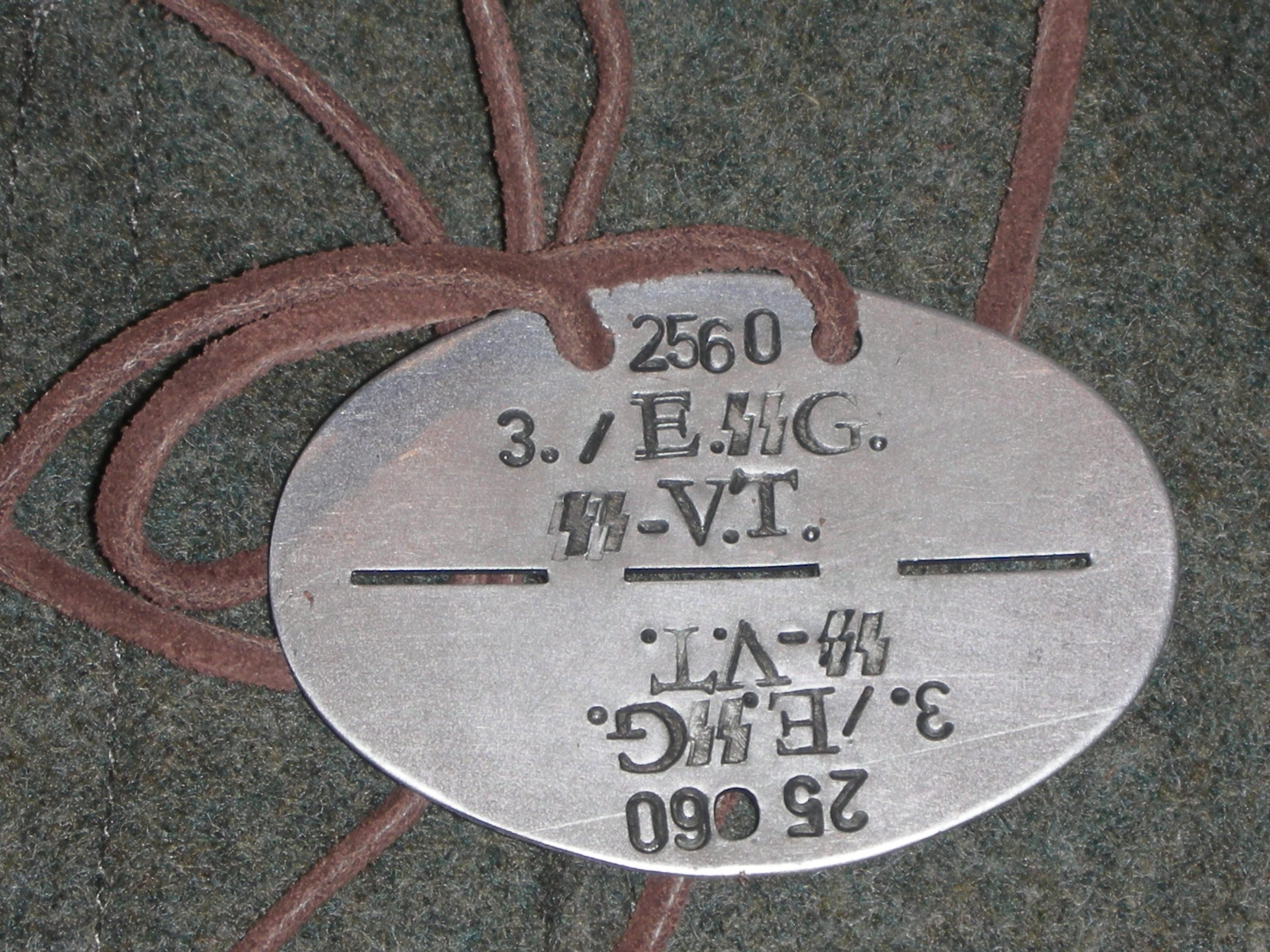‘Germania’ 9th SS Regiment:
*”Updated” SS-Hauptsturmfuhrer, 9th SS-Panzergrenadier Regiment “Germania”, Adjutant:
The SS-Verfugungstruppe (SS-VT) (SS Dispositional Troops) was formed in 1934 as combat troops for the NSDAP. By 1940, these military SS units had become the nucleus of the “Waffen-SS”, which would become famous in WWII for terrifying all of Europe. On 17 August 193,8, Adolf Hitler decreed that the SS-VT was neither a part of the Polizei nor the Wehrmacht, but military-trained men directly at the disposal of the Führer in war and peace.
The SS-VT was formed on 24 September 1934 from a merger of various NAZI and para-military formations such as the SS Special Detachments (SS-Sonderkommandos) and the Headquarters Guard (SS-Stabswache) units. The recruits were trained to be combat-ready infantry according to the German Army's HEER regulations. The unit was officially designated ‘SS-Verfugungstruppe’ (“Dispositional Troops”, i.e., troops at the personnel disposal of Adolf Hitler). The existence of the SS-Verfugungstruppe was publicly declared on 16 March 1935.
Elements of the SS-VT served with the Wehrmacht during the occupation of the Sudetenland, Austria, and Czechoslovakia. The SS-VT Regiments Deutschland and Germania, along with the Leibstandarte, participated in the invasion of Poland, with Der Führer (Recruited in Austria after the Anschluss) in reserve in Prague. In September 1939, a combined unit of SS-VT and Heer Army Troops conducted operations as a Panzer Division “Kempf” during the invasion of Poland. It fought alongside the Army units at Rozan, Modlin, and Kmiczyn. The Division was disbanded near the Polish City of Nidzica on 7 October 1939.
Events during the invasion of Poland raised doubts over the combat effectiveness of the SS-VT. Their willingness to fight was never in any doubt; at times, they were almost too eager to fight. The OKW or Oberkommando der Wehrmacht (High Command of the Armed Forces) reported that the SS-VT had unnecessarily exposed themselves to risks and acted recklessly, incurring heavier losses than the Army troops. They also mentioned that the SS-VT had been poorly trained and that their officers were unsuitable for command. In its defense, the SS-VT insisted that it had been hampered by fighting piecemeal instead of as one formation and being improperly equipped to carry out what had been required of it. Heinrich Himmler insisted that the SS-VT should be allowed to fight in its formations, under its commanders, while the OKW tried to have the SS-VT disbanded altogether. Hitler, unwilling and upset with either the Army or Himmler, chose a different path. He ordered that the SS-VT form its Divisions, but the Divisions would be under Army Command.
In the wake of the Polish Invasion, there were four SS combat regiments: Liebstandarte, Deutschland, Germania, and Der Führer. The latter three were reorganized into the SS-Verfugungs Division, and the Leibstandarte was expanded into a motorized brigade. In addition, there were the armed but not trained Totenkopfstandarten; three of these, together with SS Heimwehr Danzig, were organized into the Totenkopf-Division under Eicke’s command. A further Division, the Polizei-Division, was created from the Ordnungspolizei. These formations took part in Operation Fall Gelb against the Low Countries and France in 1940.
The SS-VT saw their first action in the main drive for the Dutch central front around Rotterdam. After the City had been captured, the Division, along with the other Divisions, intercepted a French Force, forcing them back into the area of Zeeland and Antwerp. They were next used to mop up small pockets of resistance in the areas captured by the German advance.
The SS-VT was renamed the Waffen-SS in a speech made by Adolf Hitler in July 1940; on 1 August, Himmler established the Kommandant der Waffen-SS. In December 1940, the Germania Regiment would be removed from the Verffugungs-Division and used to form a cadre of a new division, SS-Division Germania, comprising mostly of “Nordic” volunteers from the newly-conquered territories, Danes, Norwegians, Dutch, and Flemish; it was soon renamed “Wiking”
SS-Division Wiking was formed in December of 1940 around the Germania regiment, from the SS-Division Verfugungstruppe (Later renamed Das Reich). It took part in the invasion of the Soviet Union, attached to Heeresgruppe Sud. During the advance, it was involved in several encirclements of Soviet troops before reaching Rostov in November 1941. But in the winter, they were pressed back by Soviet advances. In the spring, it went on the offensive, this time towards the Caucasus. It would, however, soon be forced to retreat to avoid being cut off. It fought in the Kursk in 1943 as well. Following that failure, it retreated again, getting trapped in the Cherkasy Pocket. It managed to break out of the pocket, but the losses were very heavy, and they lost all of their armor in the process.
Withdrawing to Cholm to reform, except the Kampfgrouppe, which remained at the front and was sent to Poland in July 1944. where it fought at the Vistula.
It was then sent to Hungary in December 1944, where it took part in the failed attempt to relieve Budapest. It withdrew through Hungary and Czechoslovakia, before surrendering to Austria.
This SS-Hauptsturmführer is acting in the role of Adjutant. The quality of the uniform is not found on the front lines but worn in a staff position, earned by bad injuries. He had been a member of the SA, as shown by his service ribbon. This SS-Mann has been with the SS through the “Flower Wars”, Poland, and France, and into Russia. Proving his leadership ability, he has been awarded the Knight’s Cross and subordinate Iron Crosses 1st and 2nd Classes. Fighting in the role of (other than infantry, but he has the Infantry Assault Badge as well, with no lack of bravery and frontline leadership,p is demonstrated by two Tank Destruction Badges and the Close Combat Clasp in Bronze. At some point in his front-line career, he ended with the debilitating loss of a limb, recognized by his Black 'Wound Badge and his Staff Assignment.
He has the first pattern of the “Germania” cuff title, and Guilt Cyphers are worn on his shoulder boards, as well as all officer-quality insignia. This tunic would be worn with either trousers and black shoes or breaches and riding boots, SS-Officer belt, and buckle with his fine Schirmmutz.
SS-Mann, Hans-Jörg Hartmann SS-Standarte “Germania" 1936:
Hartmann began his SS career as a member of the newly formed SS-Verfügungstruppe in 1936. He would attend the SS-Junkerschule at Bad Tolz and fall in action at the rank of SS-Hauptsturmführer with III Battalion “Nordland ”SS Division “Wiking” in late 1941. The SS-Verfügungstruppe was formed on 24 September 1934 from a merger of various NSDAP and paramilitary formations such as SS-Sonderkommandos and SS-Stabswache.
The SS-VT was to be made up of three regiments modeled on the infantry regiments of the Heer and would contain three battalions, a motorcycle company, and a mortar company. SS-Verfügungstruppe translates into "Dispositional troops", i.e., troops at the personal disposal of the Führer. During wartime, they would be placed at the "disposal" of the army. The existence of the SS-Verfügungstruppe was announced on 16 March 1935 by Hitler in a speech at the Reichstag. The SS-VT trained alongside Hitler's bodyguard, the Leibstandarte SS Adolf Hitler (LSSAH).
The ”LSSAH” continued to serve exclusively as a personal protection unit and honor guard during this timeframe. SS-Standarte “Germania” was formed in 1934 as SS-Standarte 3 / VT around a cadre from Hamburg, the Politische Bereitschaft SS 2. It was soon renamed SS-Standarte 2 / VT when Hitler ordered that SS-Leibstandarte Adolf Hitler not be included in the numbering sequence. It was renamed SS-Standarte “Germania” at the Parteitag in Nuremberg in 1936, when it also received its Deutschland Erwache standard. It took part in the annexation of Austria and was responsible for security during the Italian leader Benito Mussolini's visit to Germany. It took part in the annexation of the Sudetenland, attached to army units. It later served as a guard regiment in Prague, as Wach-Regiment des Reichsprotektors von Böhmen und Mähren, until July 1939. Following the invasion of Poland, while attached to 14. Armee was used to form SS-Division Verfügungstrupp, which was later renamed “Das Reich”.
SS-Untersturmfuhrer, SS-Panzergrenadier Regiment, “Germania” Versorgungs Kompanie:
The regiments march on their stomach, their vehicles on gas; All needing attention and repair, to fight. This SS-Untersturmfuhrer is the man responsible to all Regimental Commanders for provisions and ammunition for the troops, to see the supply columns get through, that the vehicle maintenance parks are up and running, and has spare parts, and Bakery and Butchers in full swing.
Wearing the feldgrau M35 uniform of the prewar “Germania” Regiment the Untersturmfuhrer has earned the War Merit Crosses 1st and 2nd Class for Meritorious actions that led to success in combat actions (like getting the Trucks through a rough spot and under fire), perhaps during the Austrian Annexation, Poland and/or France even.
He has proven his leadership and wears the award of the Iron Cross II Class as well. He has been involved in at least three combat actions, having the General Assault Badge. Of interest is his Expert Equestrian Team Award.
“Germania” is part of the 2nd SS-Division “Das Reich,” with a distinct cuff title and shoulder board ciphers. He wears a prewar NCO crusher cap piped in Versorgungs blue, indicating he was once a soldier before his ability promoted him to an officer’s school and officer rank. The tunic is worn open-collared over a standard SS-brown shirt with a black tie. Breeches, an officer's belt, and boots complete his service uniform.

















